After descending from the observation deck at the Tokyo Metropolitan Government Building Tower 2, we visited the Tokyo Tourist Information Center. We collected a few tourist brochures, and I tried asking the girl behind the counter where would be good spots for viewing cherry blossoms.
Unfortunately, I made a mistake in my Japanese. I used the word “hanami” (花見) thinking it meant cherry blossom viewing, but I later found out that this word is actually used for “cherry blossom viewing parties” which is really an excuse for Japanese friends and colleagues to get drunk in a park (cherry viewing optional). In other words, I was asking where can I find a good party for me to gatecrash! She established that we just wanted to view cherry blossoms as tourists.
After consulting with her colleagues, she recommended that we visit the Hamarikyu Gardens (浜離宮恩賜庭園) – she was pretty certain we would be guaranteed to find some cherry blossoms there. She gave some detailed instructions on how to take the subway there, but we decided to be adventurous and use it as an opportunity to take the slow train on the JR Yamanote line (山手線) to Shinbashi (新橋) – partly because we wanted to familiarise ourselves with this important train route (which describes a loop around the major areas within Tokyo) but also because as JR pass holders we could board any JR trains for no additional charge, but would have to pay to use the subway.
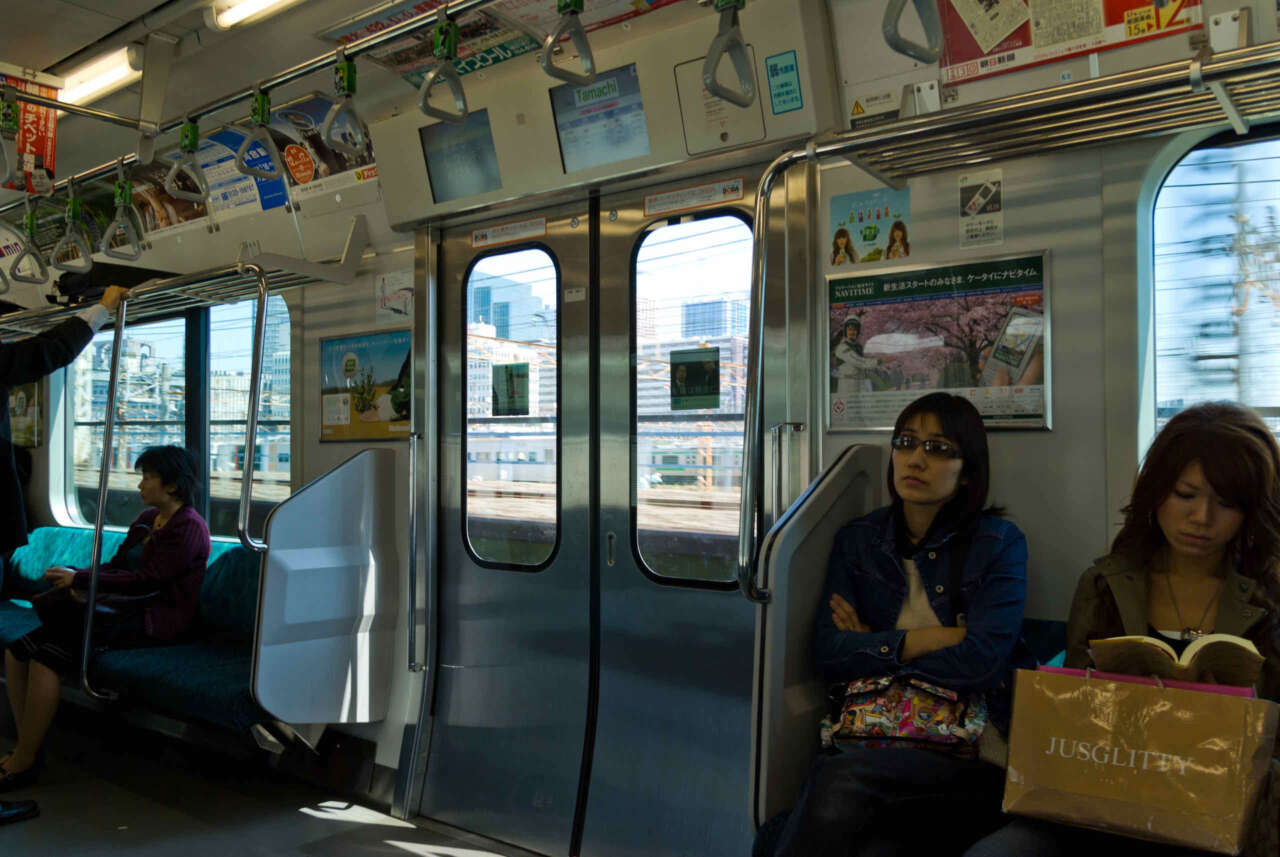
Our first experience on board a Japan Rail suburban train (we didn’t have any problems finding the right platform at Shinjuku Station – it was the first platform after the ticket gate):
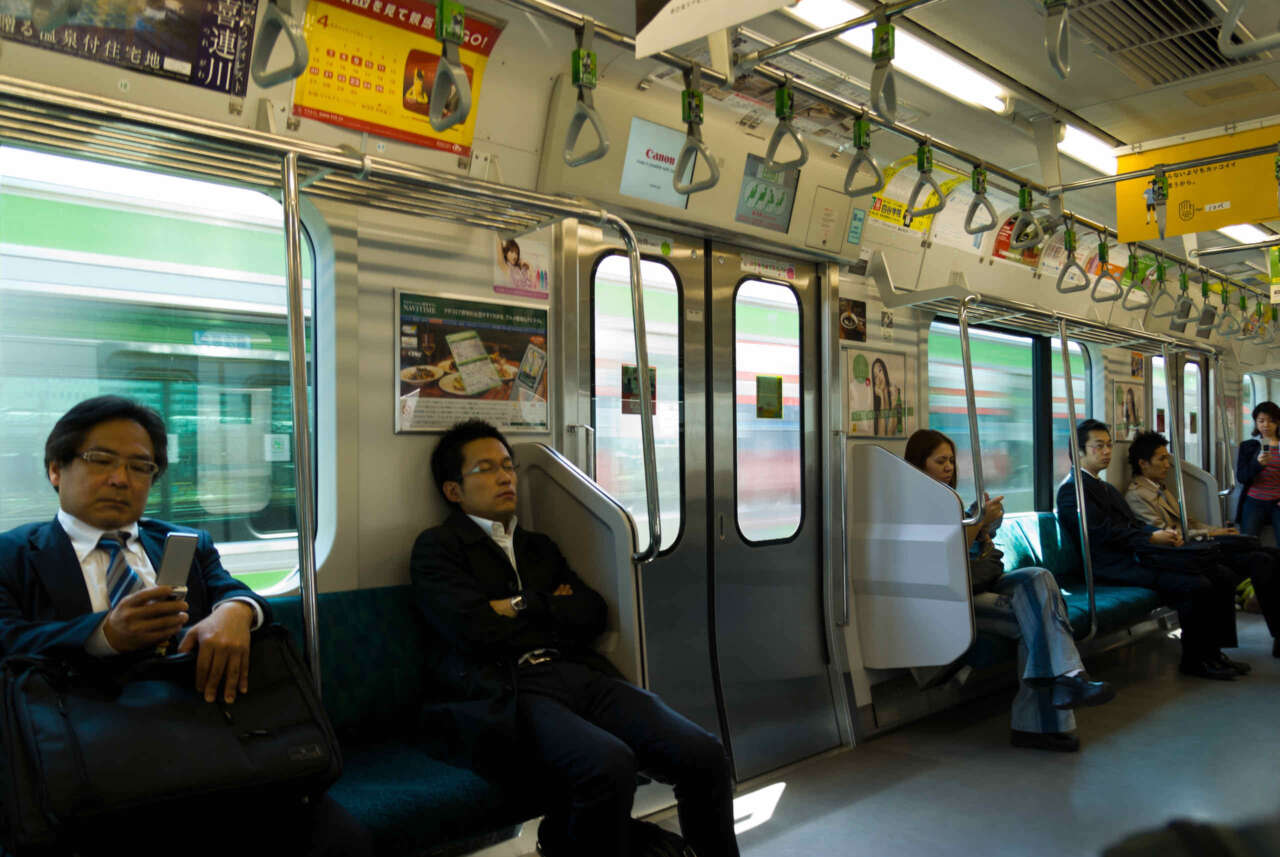
After hearing of all the stories about over-crowding on Japanese trains, we were pleasantly surprised that the train wasn’t very packed and there were plenty of room to sit. Of course, it wasn’t peak hour and workers would probably prefer to catch the Tokyo Metro subway trains which are faster.
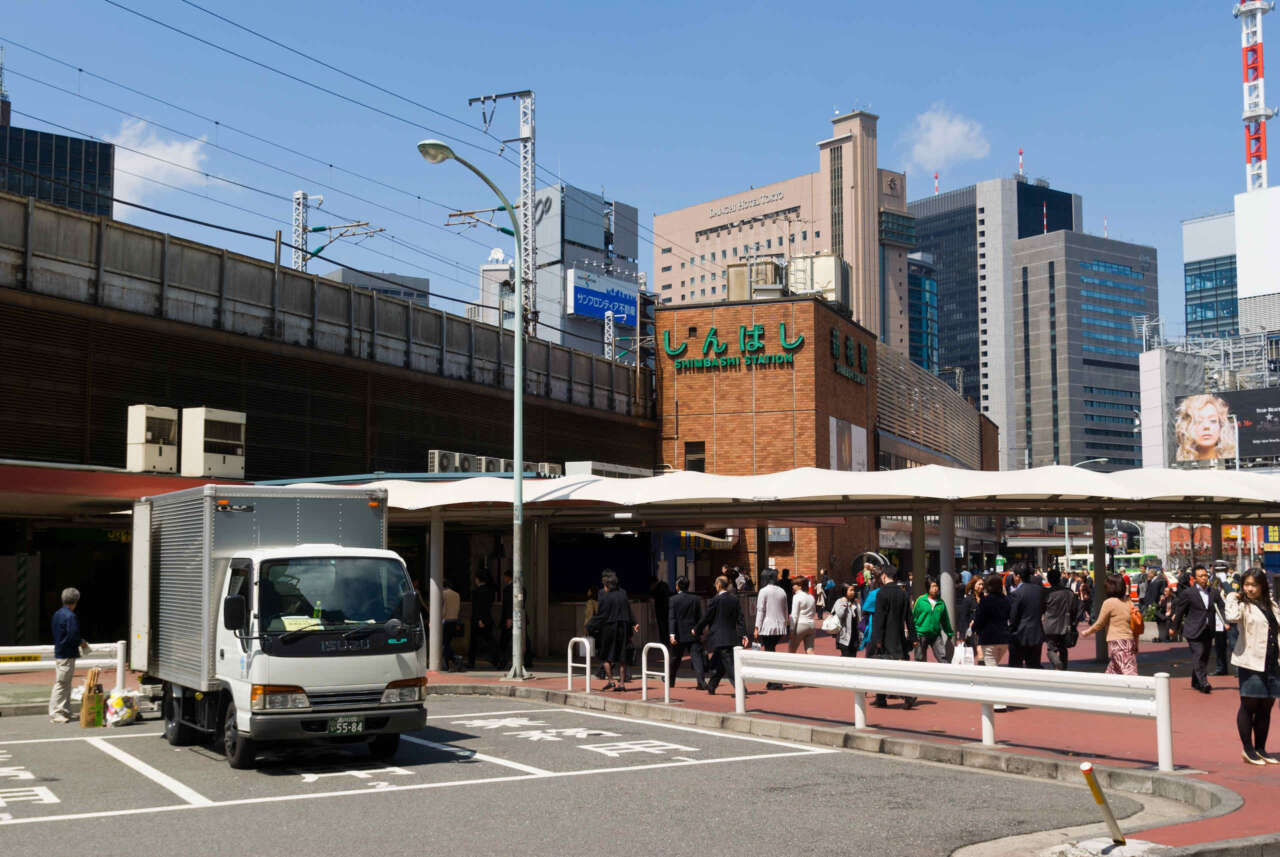
We finally arrived at Shinbashi. I had read that Shinbashi station was one of the oldest train stations in Japan and used to be the terminus for the Toukaidou Main Line (東海道本線) between Tokyo and Kobe – one of the first major railway track to be built in Japan. Therefore I was a bit disappointed that Shibashi Station looked … well … drab and boring.
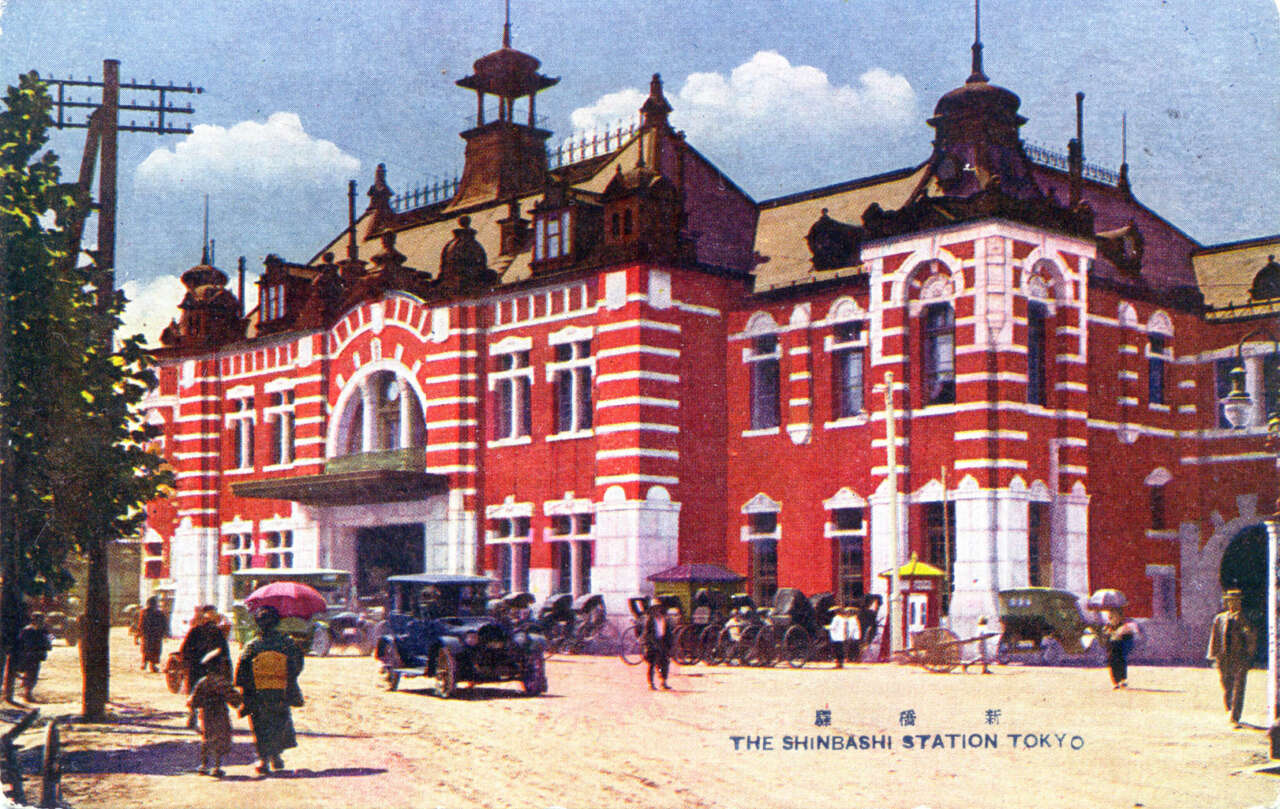
Then I discovered this wasn’t the original Shinbashi Station after all – this is a completely different station that used to be called Karasumori Station (烏森駅).The original station (新橋停車場) was demolished when the Toukaidou line was extended to stop at present day Tokyo Station (東京駅) and Karasumori Station was then renamed Shinbashi Station. The historical station building has since been reconstructed as a museum and is a few minutes walk away. This is a postcard of the station (Attribution: Public domain, via Wikimedia Commons)
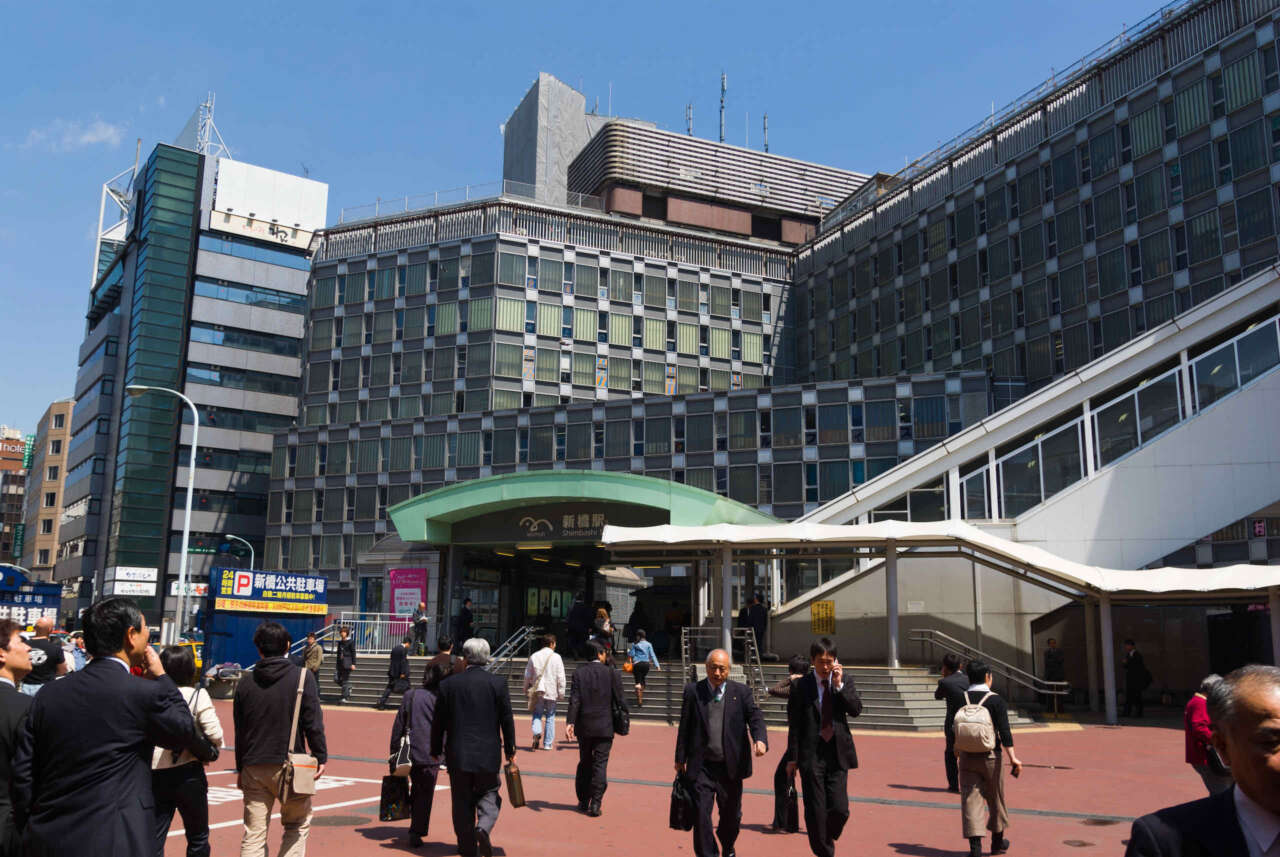
Just opposite the JR Shinbashi Station is another station, confusingly also named Shinbashi Station, but this one is the terminus for the Tokyo Waterfront New Transit Waterfront Line (東京臨海新交通臨海線) – a completely automated (driver-less) elevated transit system that passes through the artificial island of Odaiba. Also known as the Yurikamome (ゆりかもめ, named after a black headed seagull common in Tokyo Bay), this was originally regarded as a “white elephant” (similar to Sydney’s monorail) but it eventually became a tourist attraction (as the route passes through some spectacular sights of Tokyo Bay) and these days makes a profit. We ended up riding on the Yurikamome on our last day prior to departing (more later in the blog).
We walked along an elevated pedestrian walkway which takes us across the Shiodome SIO-SITE (シオサイト) – originally marsh land but reclaimed in the Edo period to be used as residences for feudal lords, and nowadays has a number of commercial skyscrapers as well as various entertainment/retail facilities.
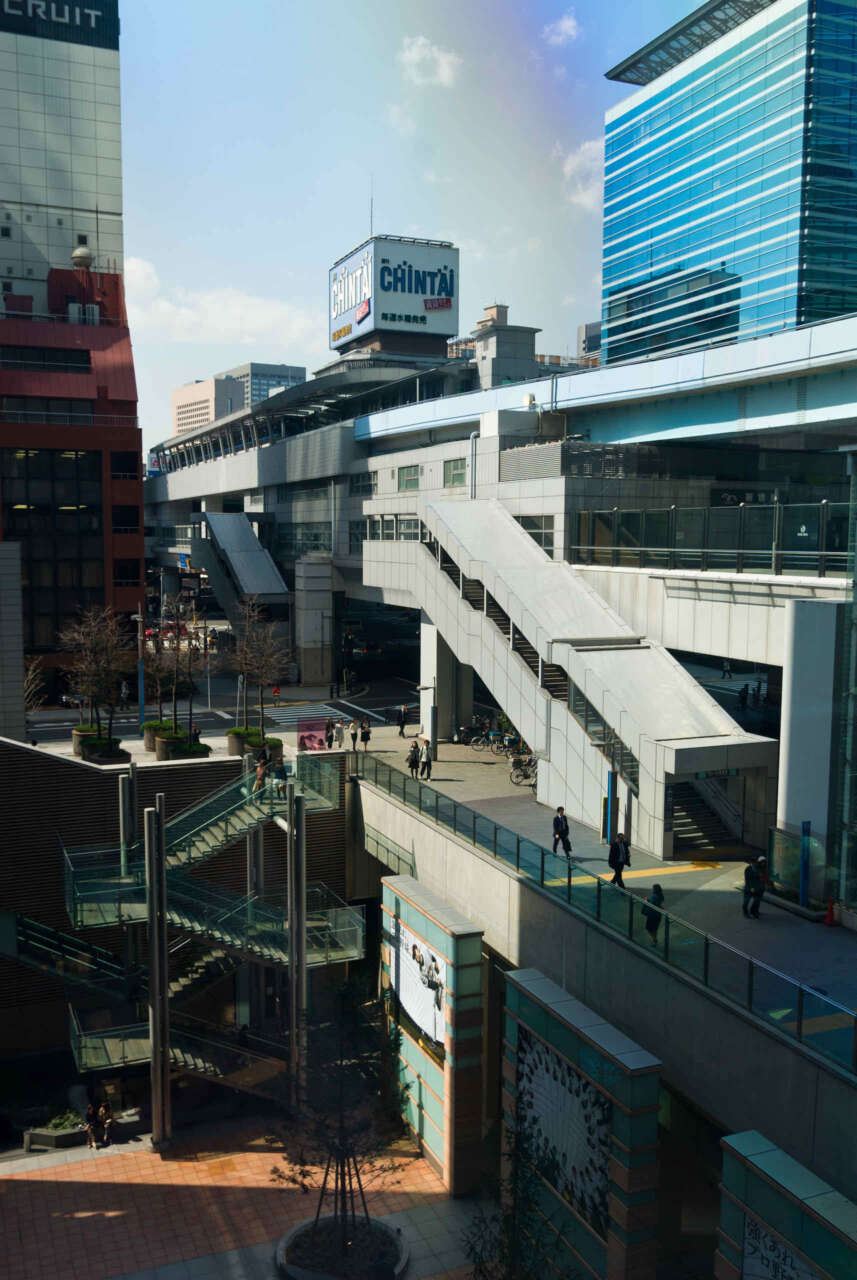
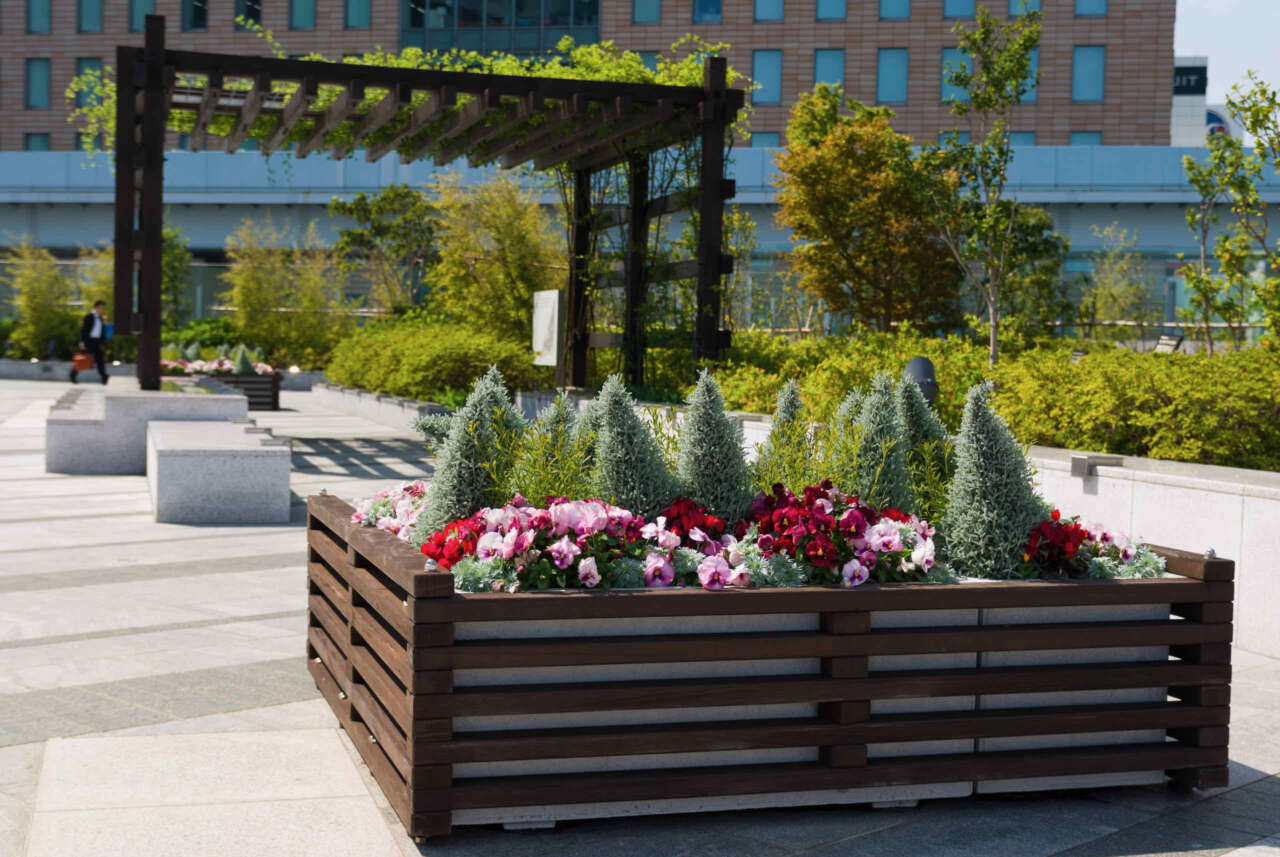
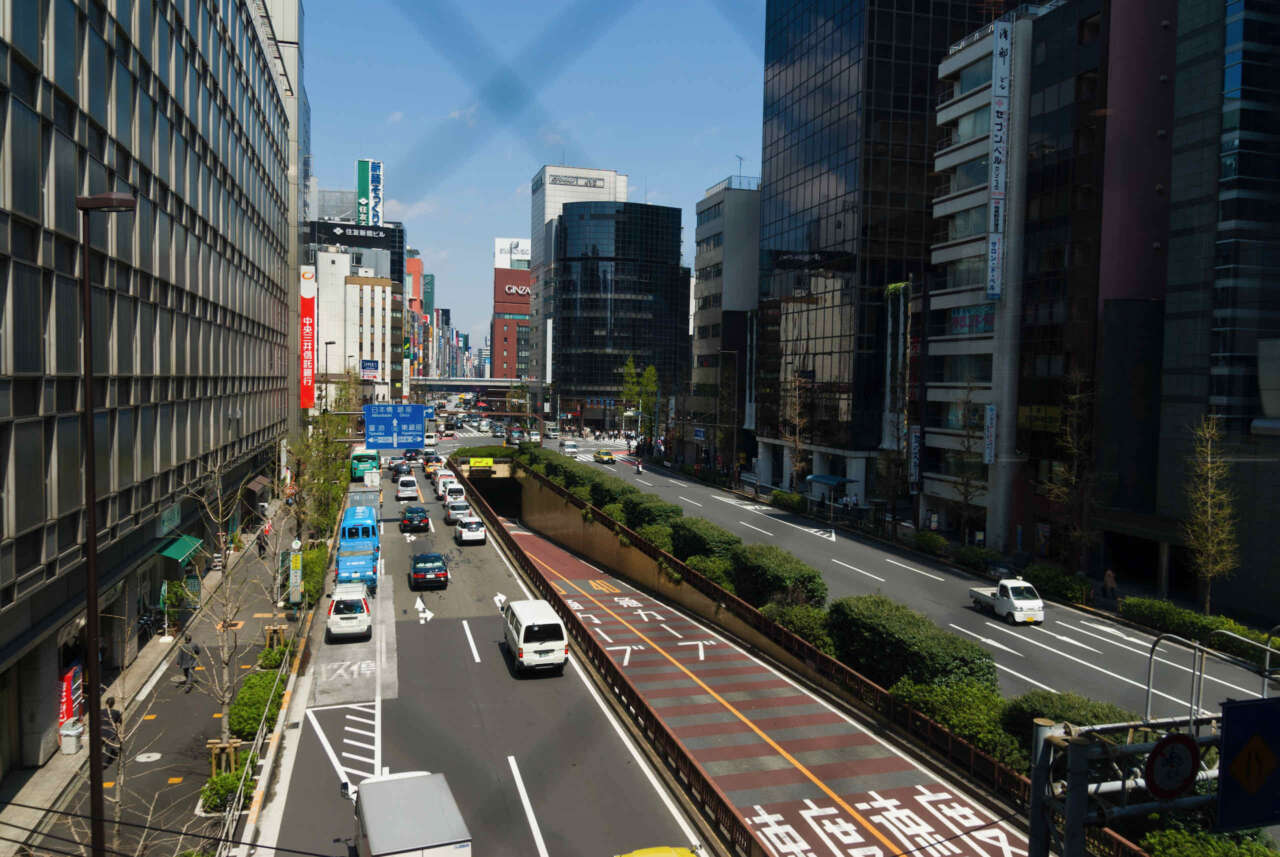
This is a view of the Ginza (銀座) district from the elevated walkway:
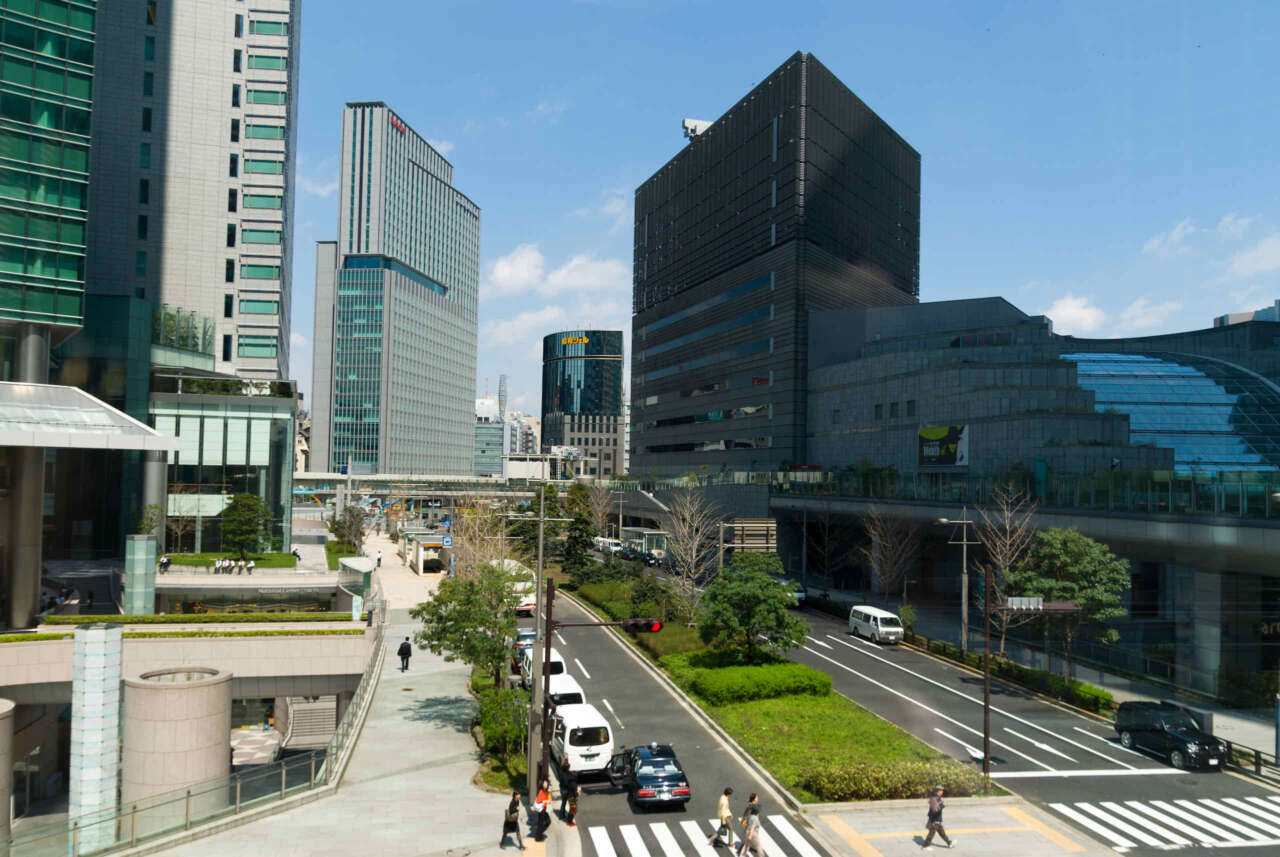
And this is the view from the opposite side of the walkway, overlooking Chuou Doori (中央通り). The tall skyscraper just to the left of the middle of the photo is the Ricoh Building, and the funny looking building on the right is the Caretta Shiodome (カレッタ汐留) – a commercial complex with a number of restaurants and shops in addition to a theatre.
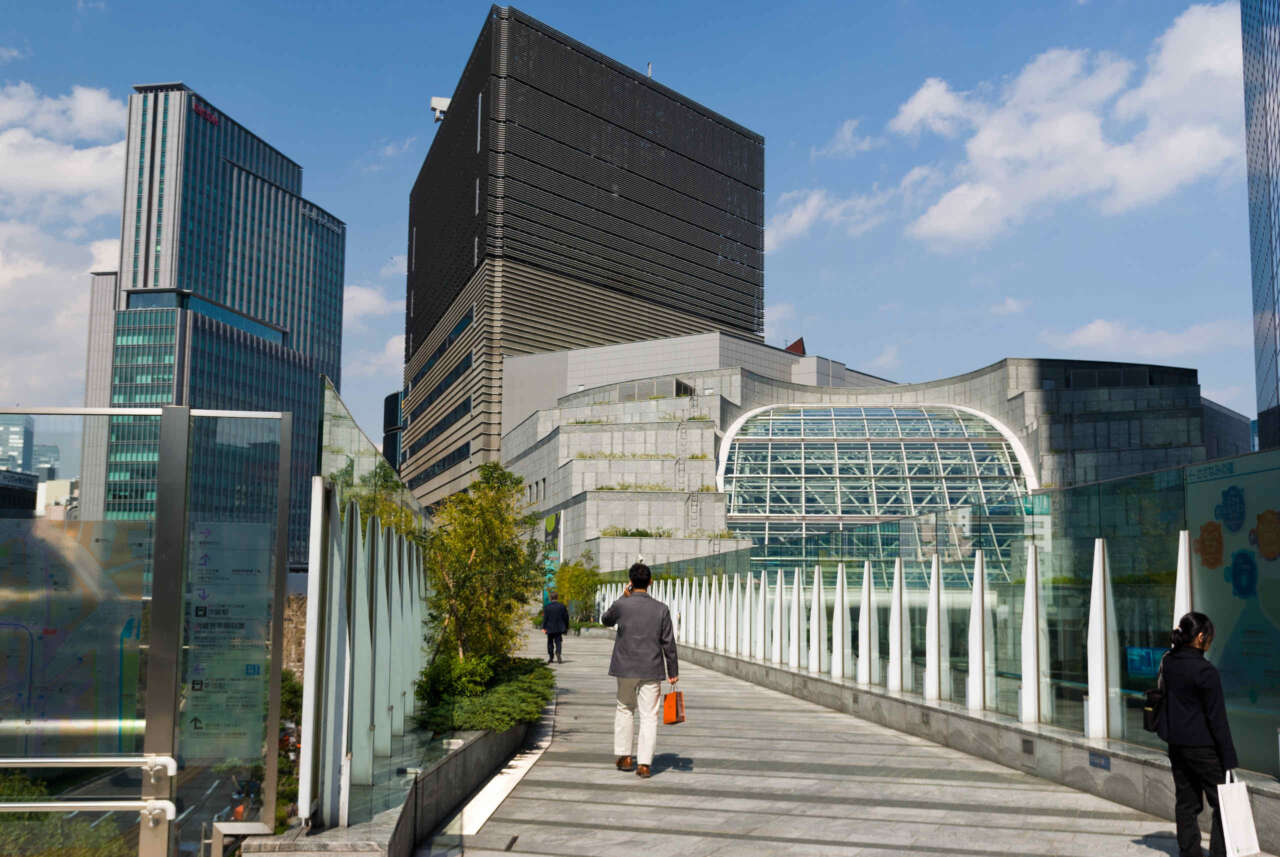
Here is a close-up of the Ricoh Building and the Caretta:
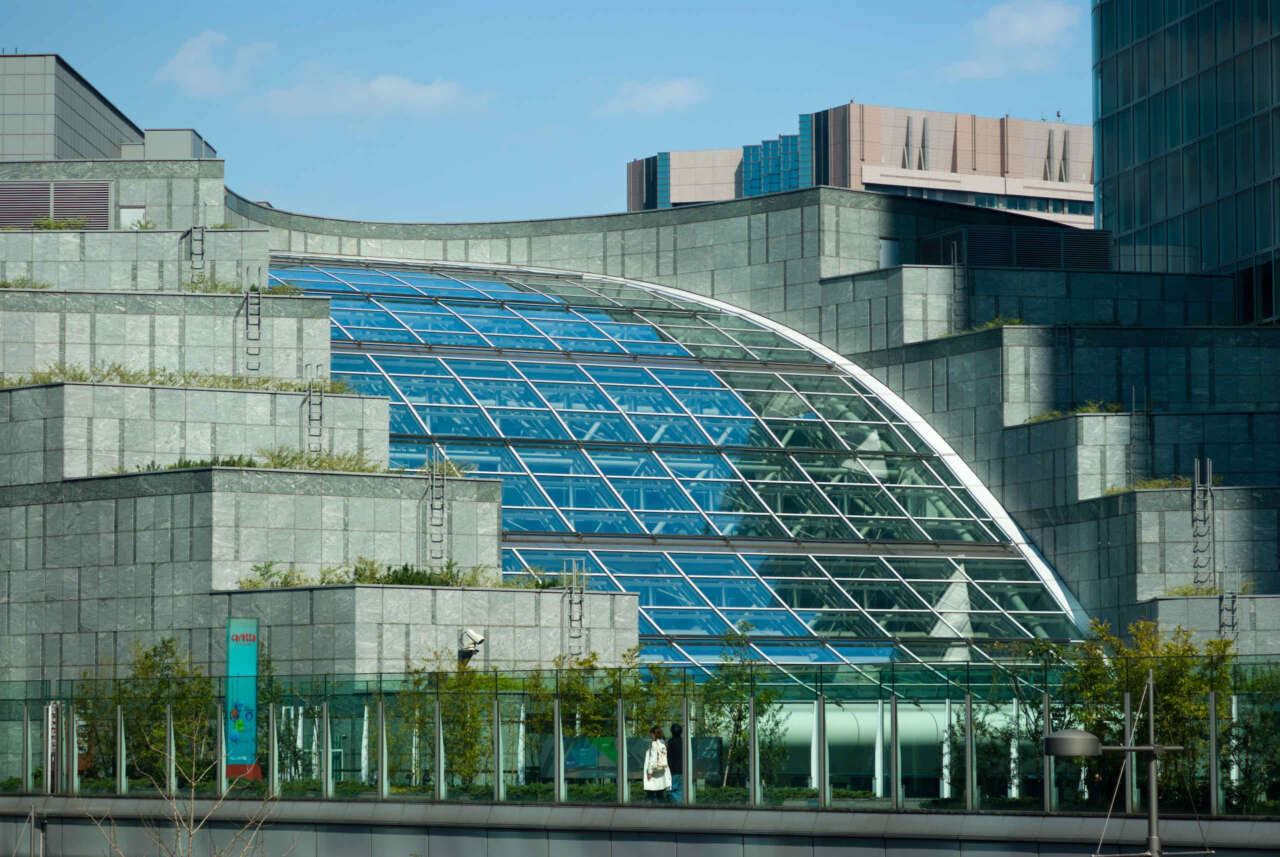
This is a closeup of the Caretta.
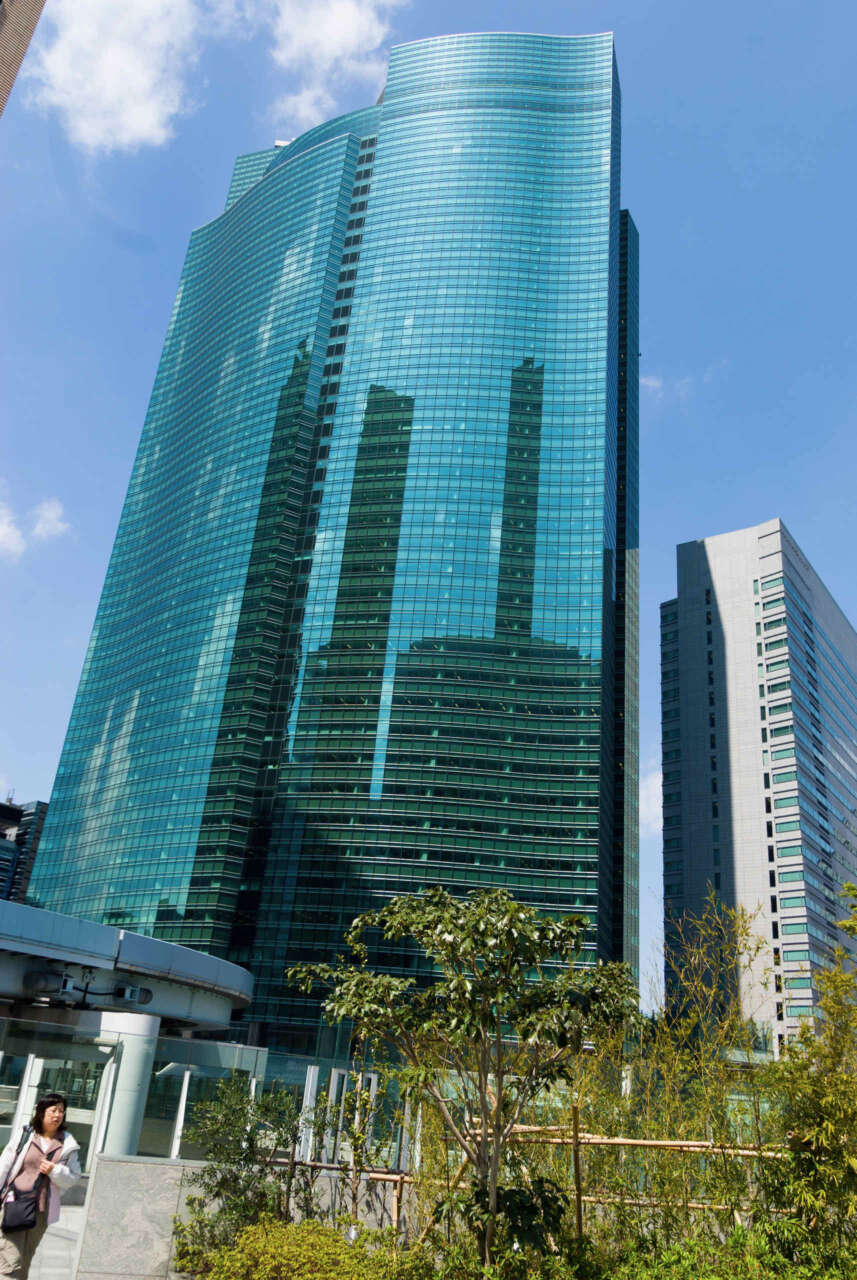
And this is the Shiodome City Center (汐留シティセンター), which also features offices as well as restaurants, shops etc. There is certainly no lack of places to eat and shops to visit around here!
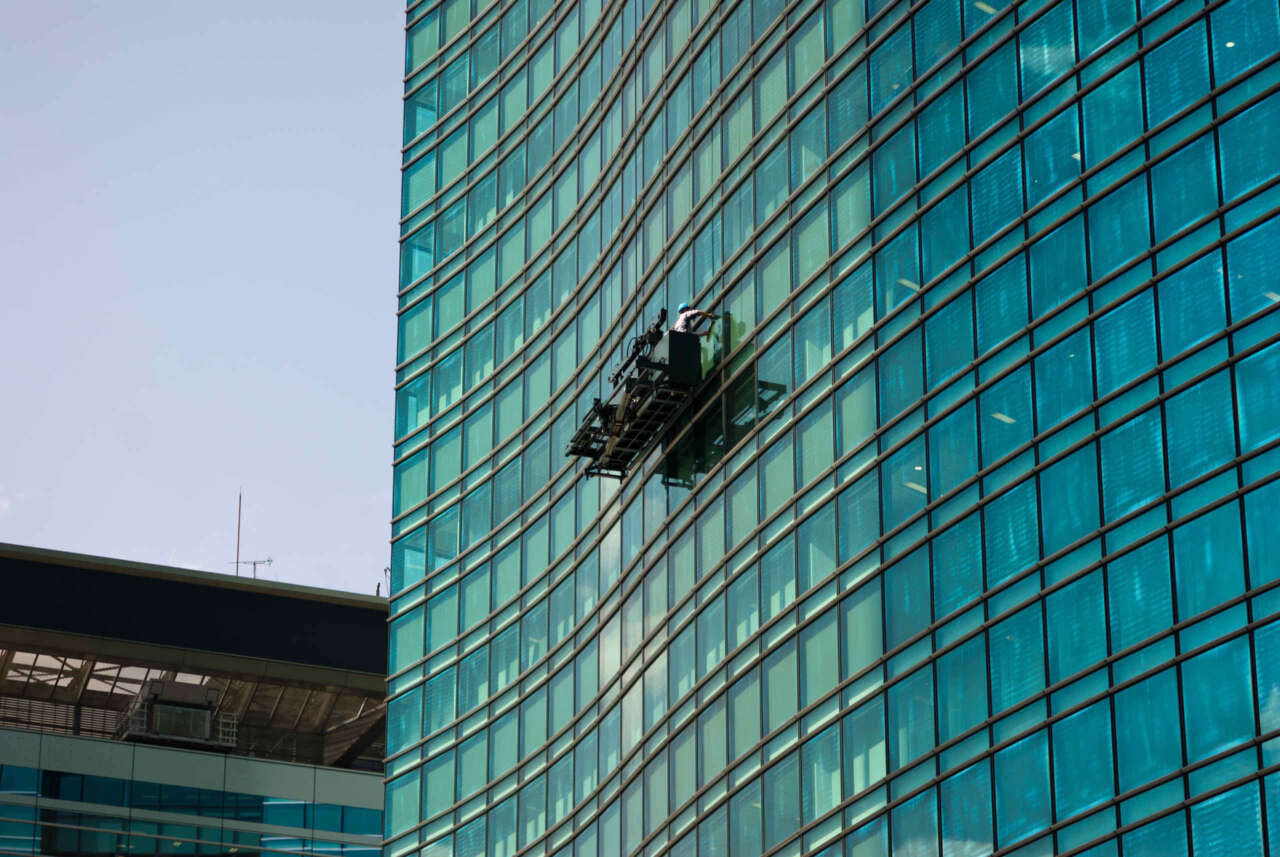
A close-up of window cleaners at work on the Shiodome City Center.
We took a detour to visit the NTV Tower (日本テレビタワー) – home of the Nippon Television Network Corporation (日本テレビ放送網株式会社) – the first national commercial TV broadcaster in Japan.
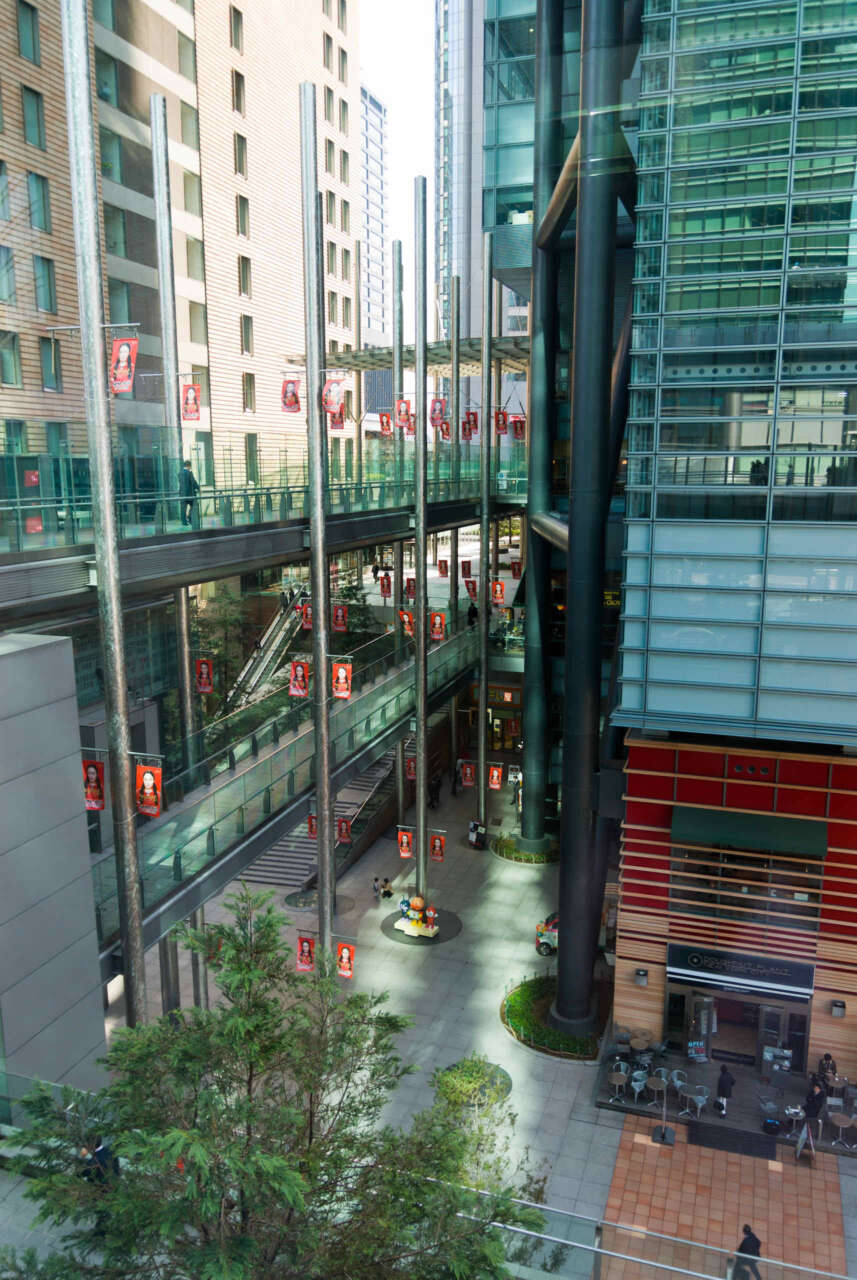
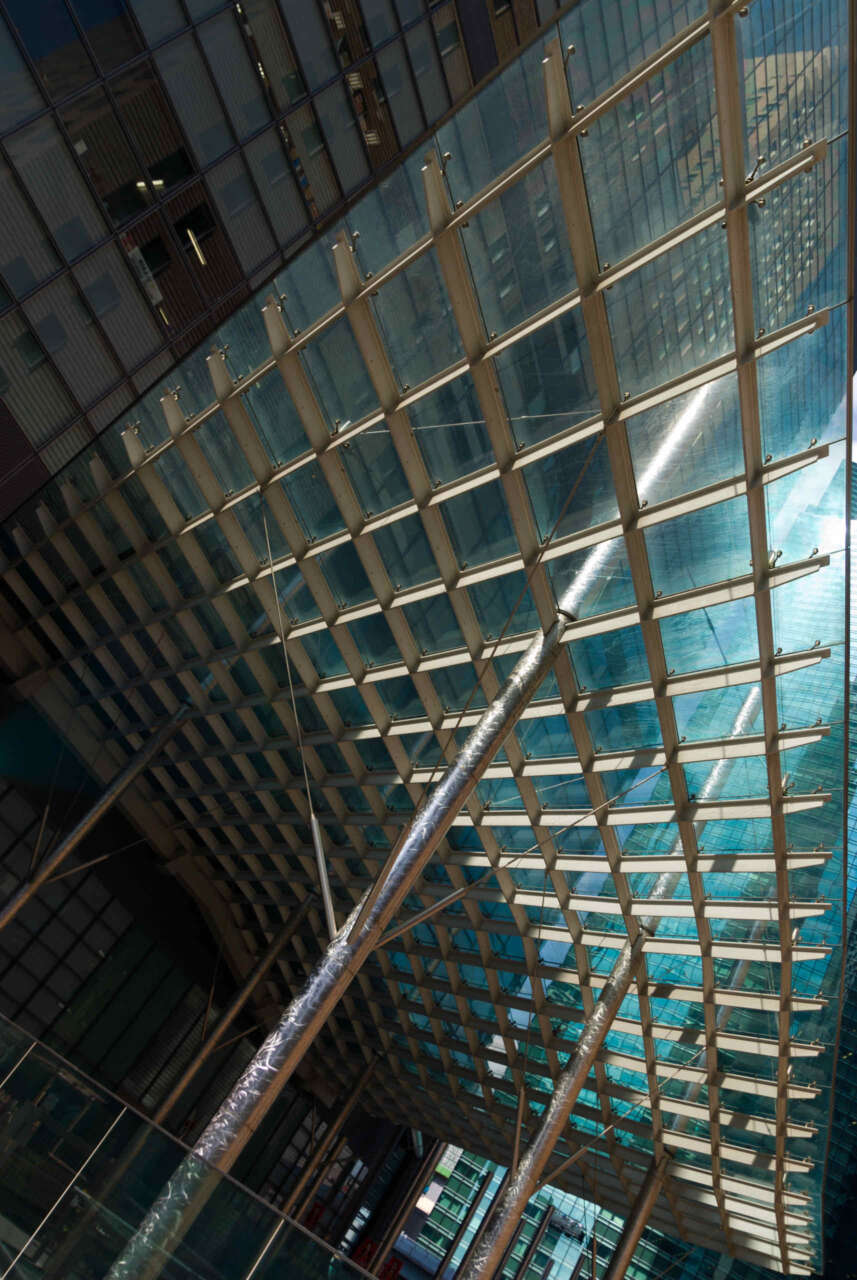
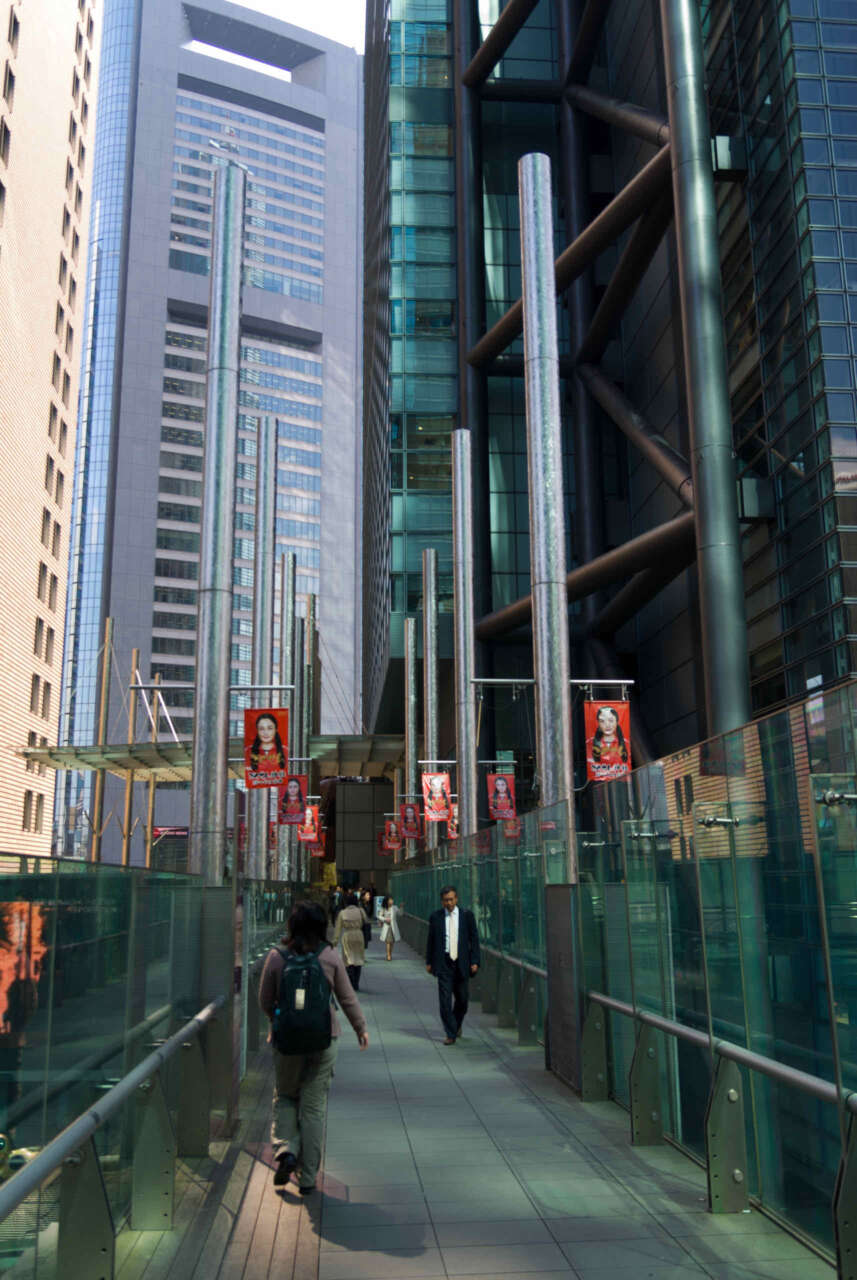
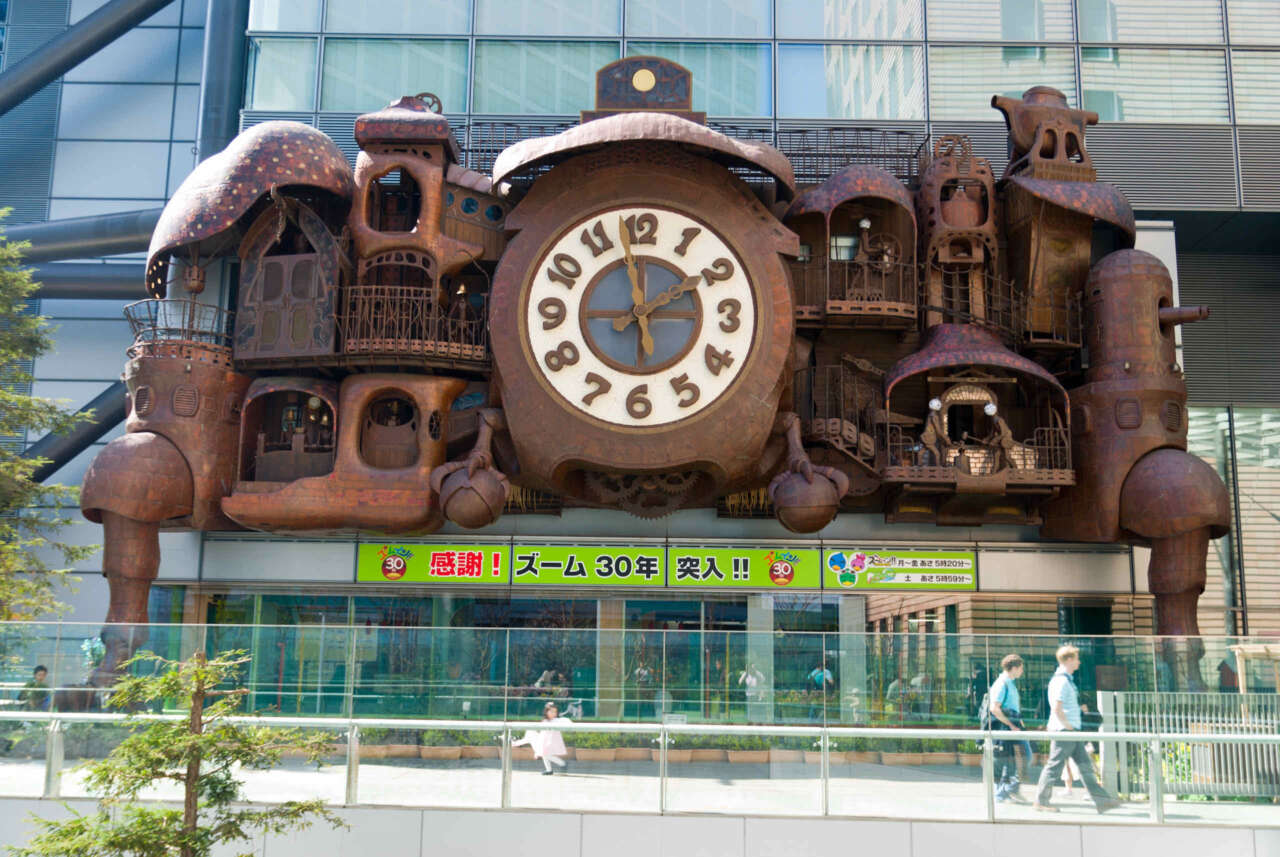
The NTV Tower features a large copper clock (日テレ大時計) that animates itself once a day. It was designed by Miyazaki Hayao (宮崎駿) – the famous anime director from Studio Ghibli.
Here’s a Youtube video of the clock in operation:
And here’s another video (also from YouTube) showing the clock at night:
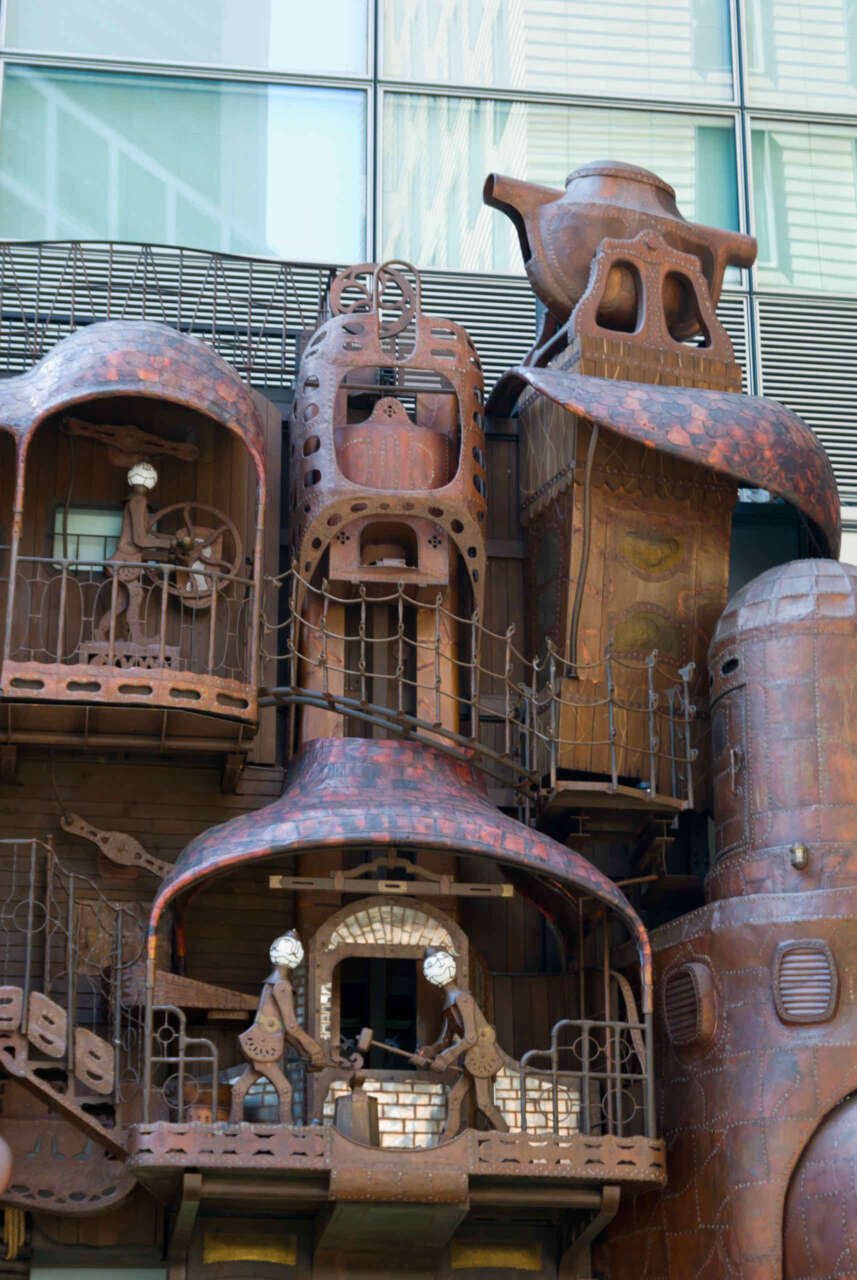
Close-up of the clock.
And next to the clock is a small shrine (!) – the Hibiya shrine (日比谷神社).
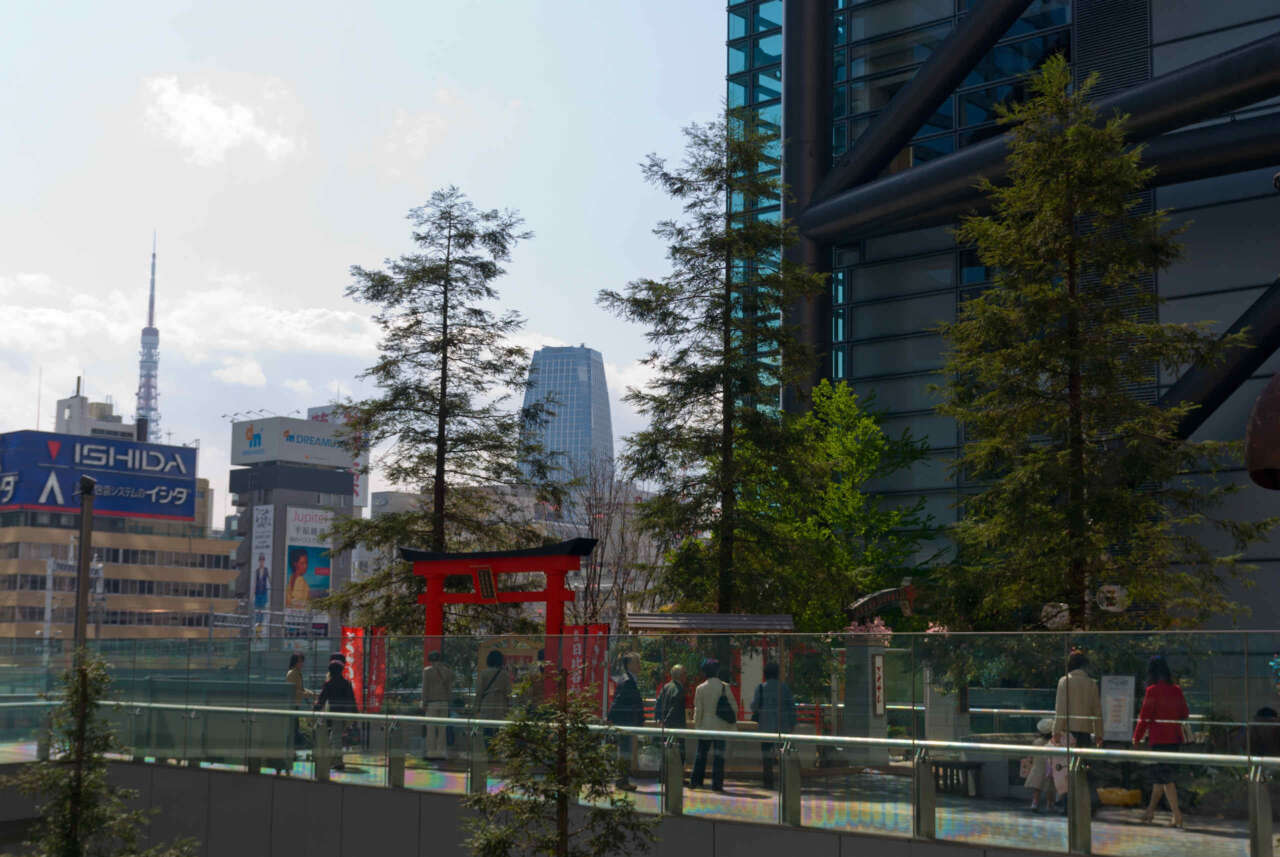
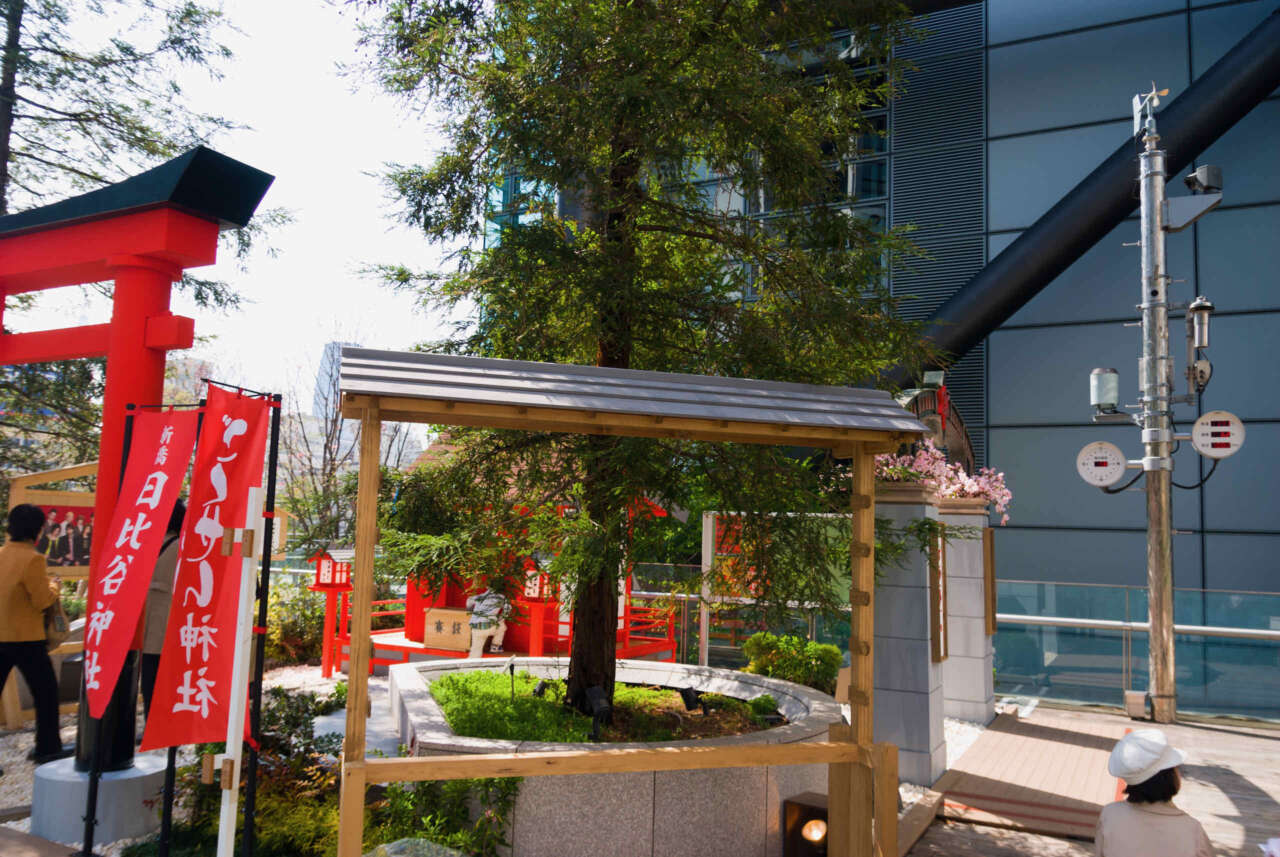
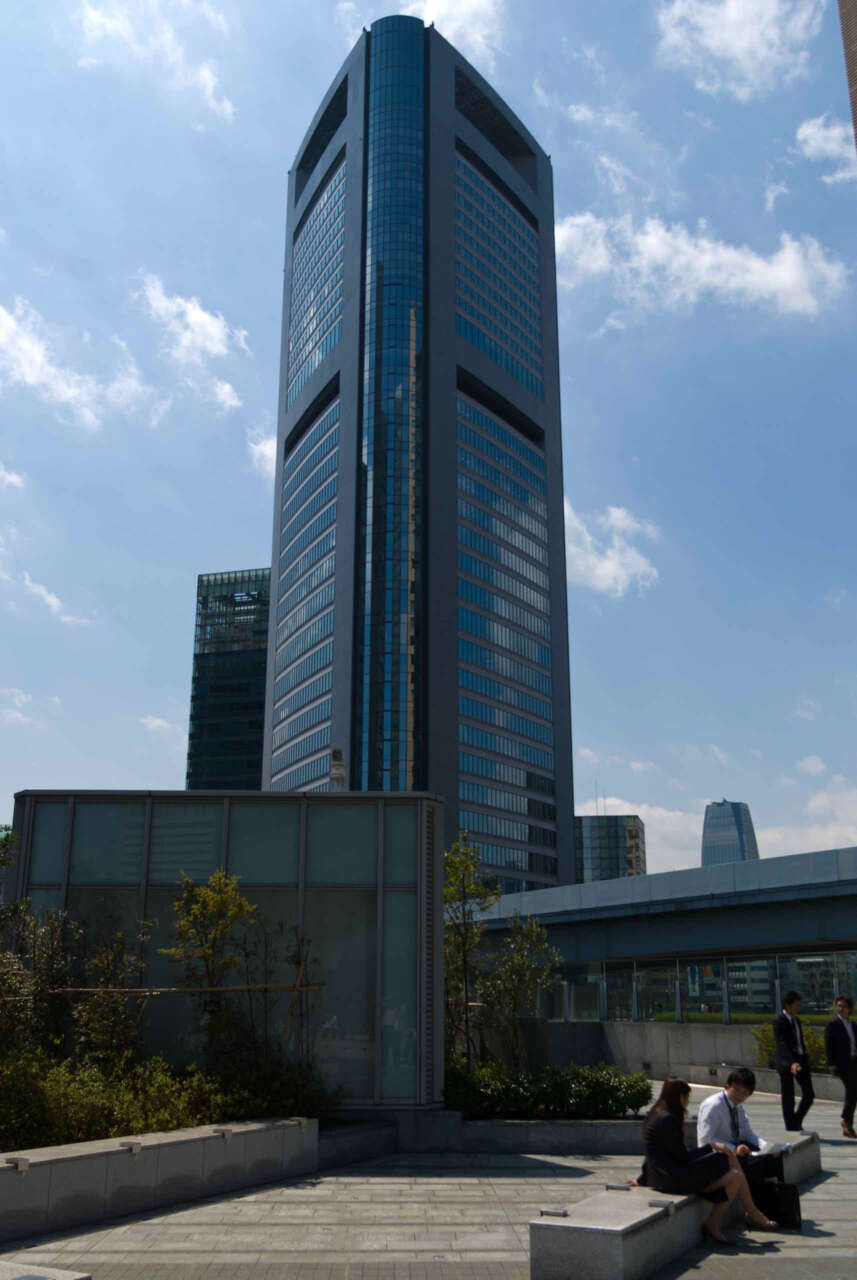
And nearby is yet another skyscraper called the Shiodome Media Tower (汐留メディアタワー):
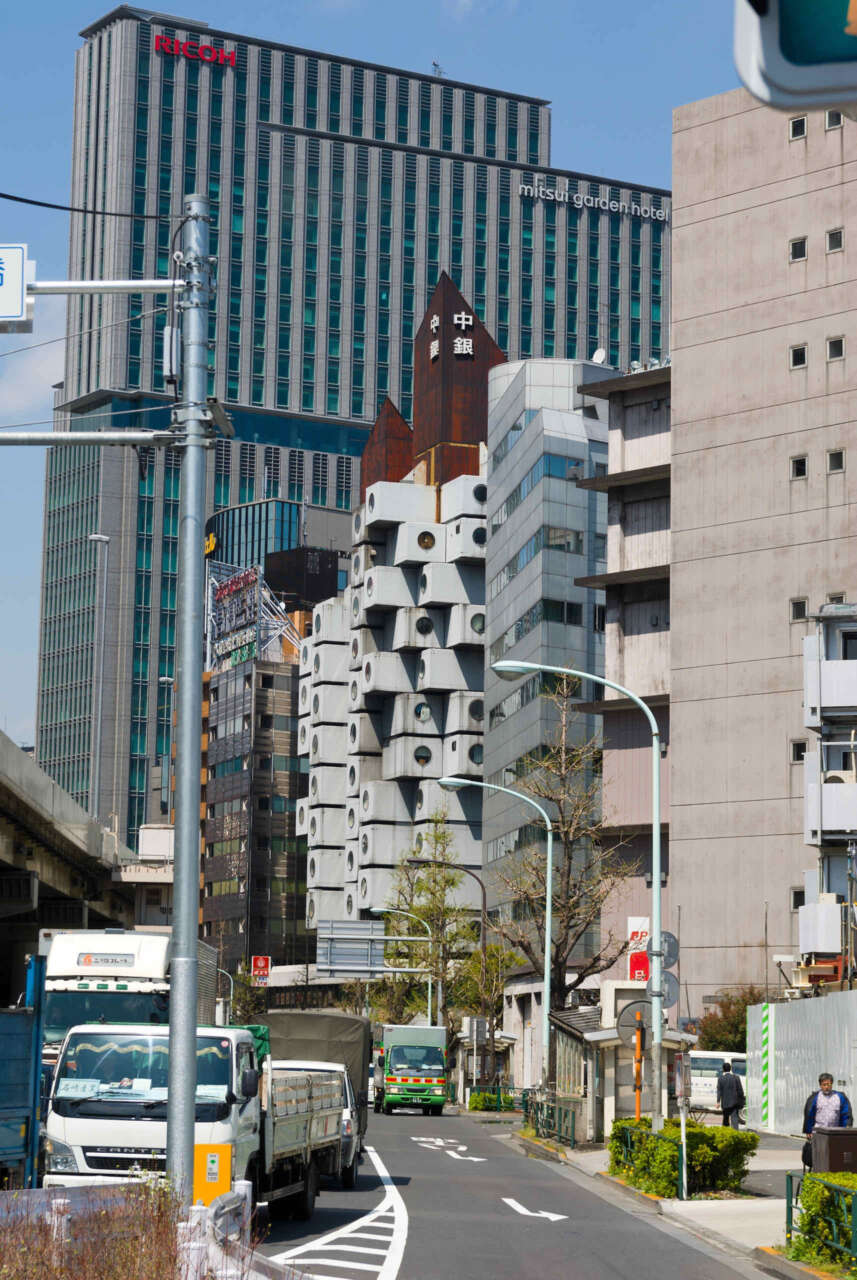
This funny looking building is the Nakagin Capsule Tower (中銀カプセルタワ) – a rare example of capsule architecture – containing 140 self-contained capsules originally intended as (cramped) living quarters for bachelor salarymen:
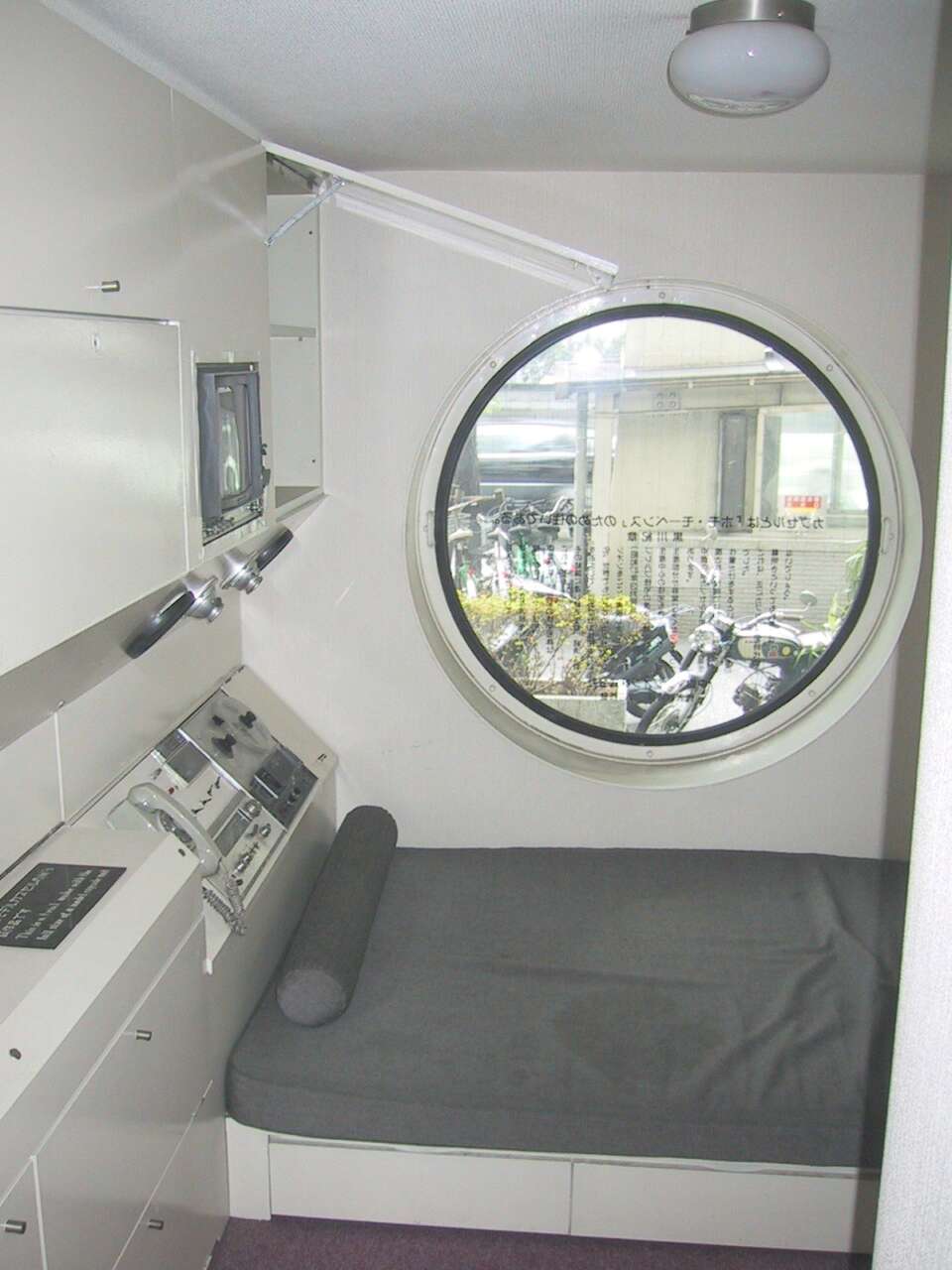
Here is an example of a capsule (Attribution: Chris 73 / Wikimedia Commons):
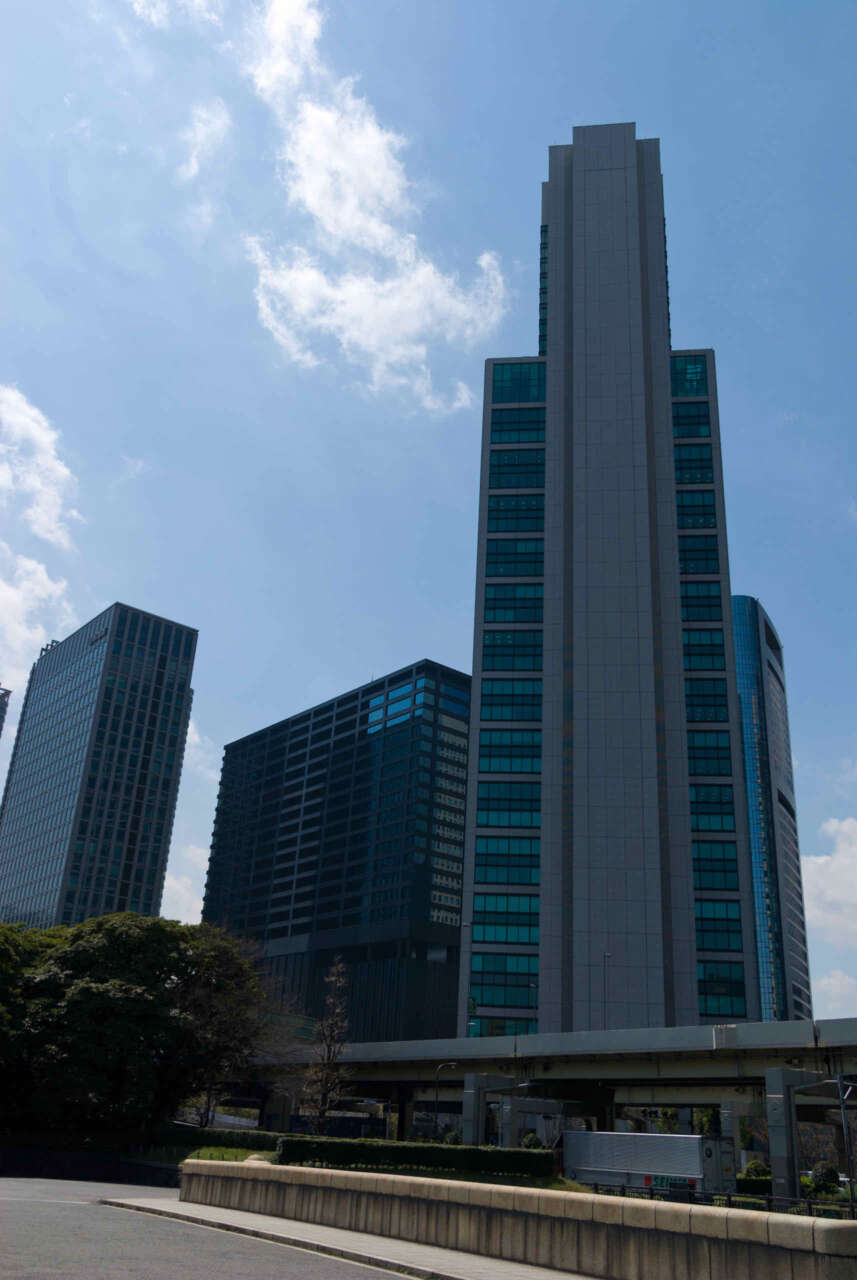
And this is the Dentsu Headquarters Building (電通本社ビル) – home for one of the largest advertising agencies in the world.
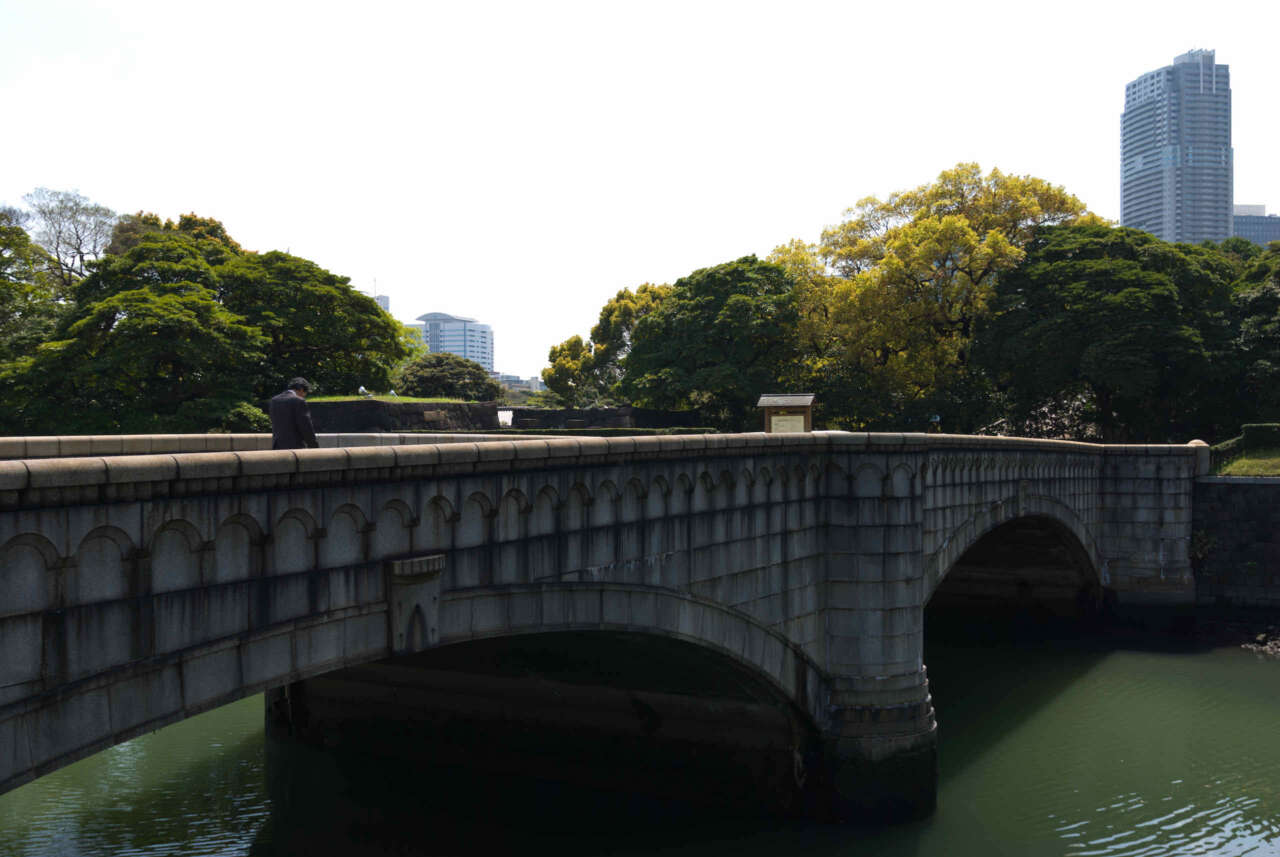
Finally we reached the Main Gate Bridge (大手門橋) over Tsukijigawa (築地川) river which is the main entrance to the Hamarikyu Gardens.
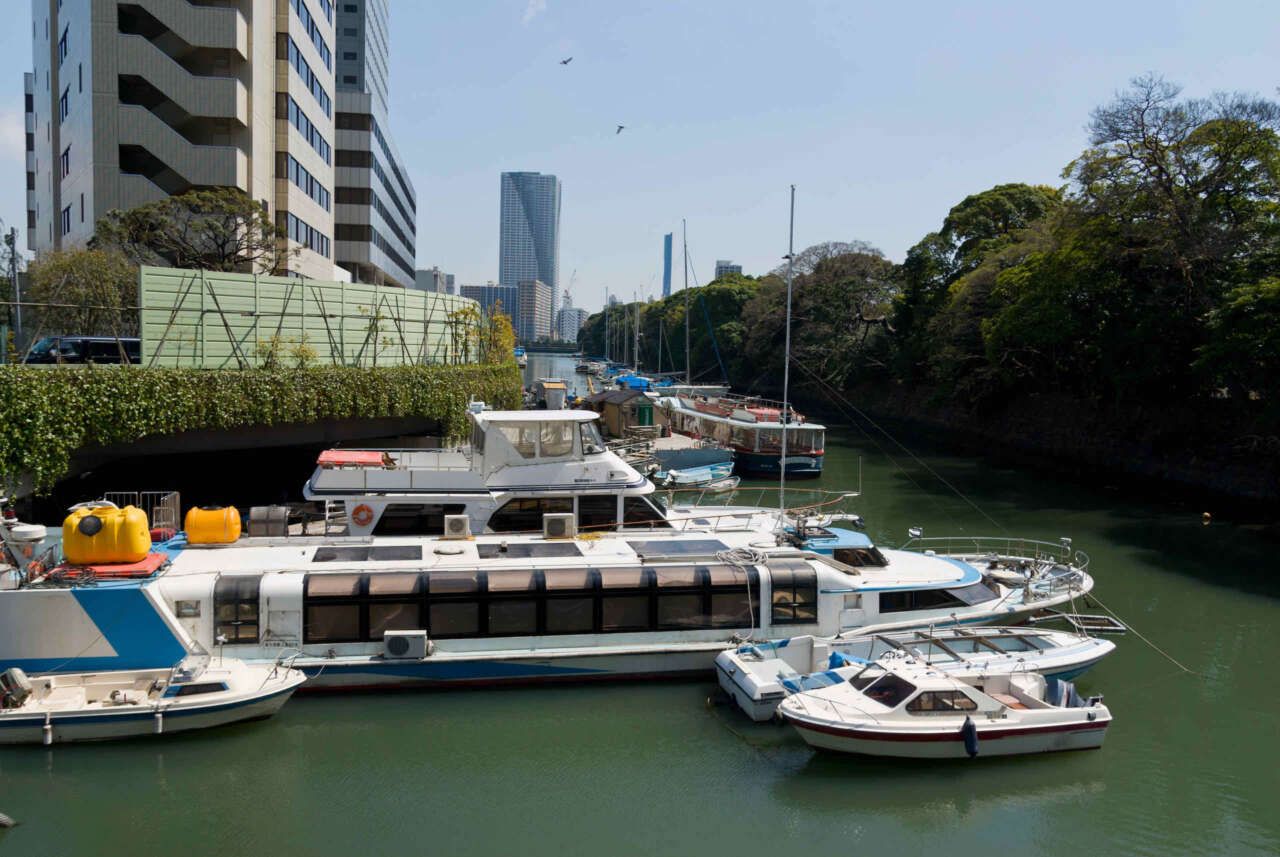
And this is the view of the Tsukijigawa (築地川) river.








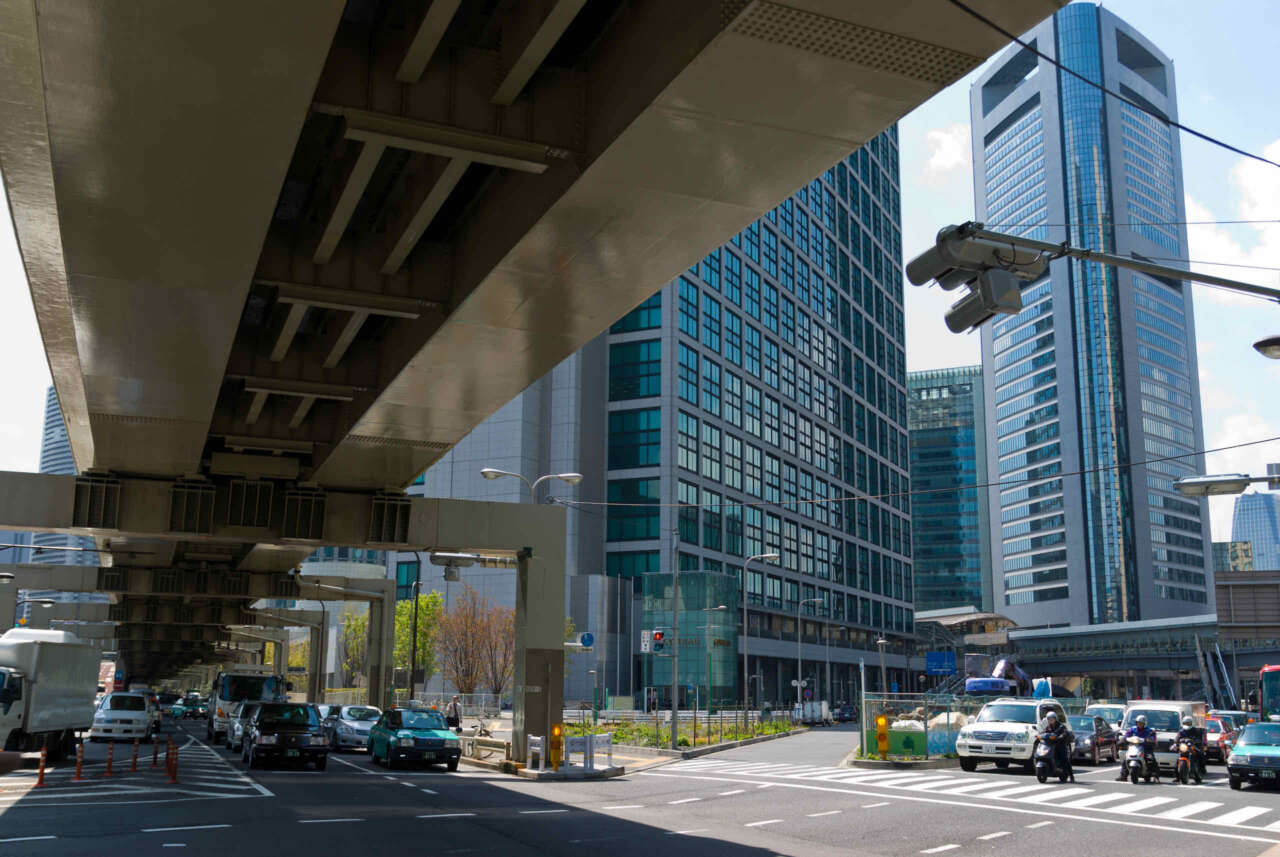




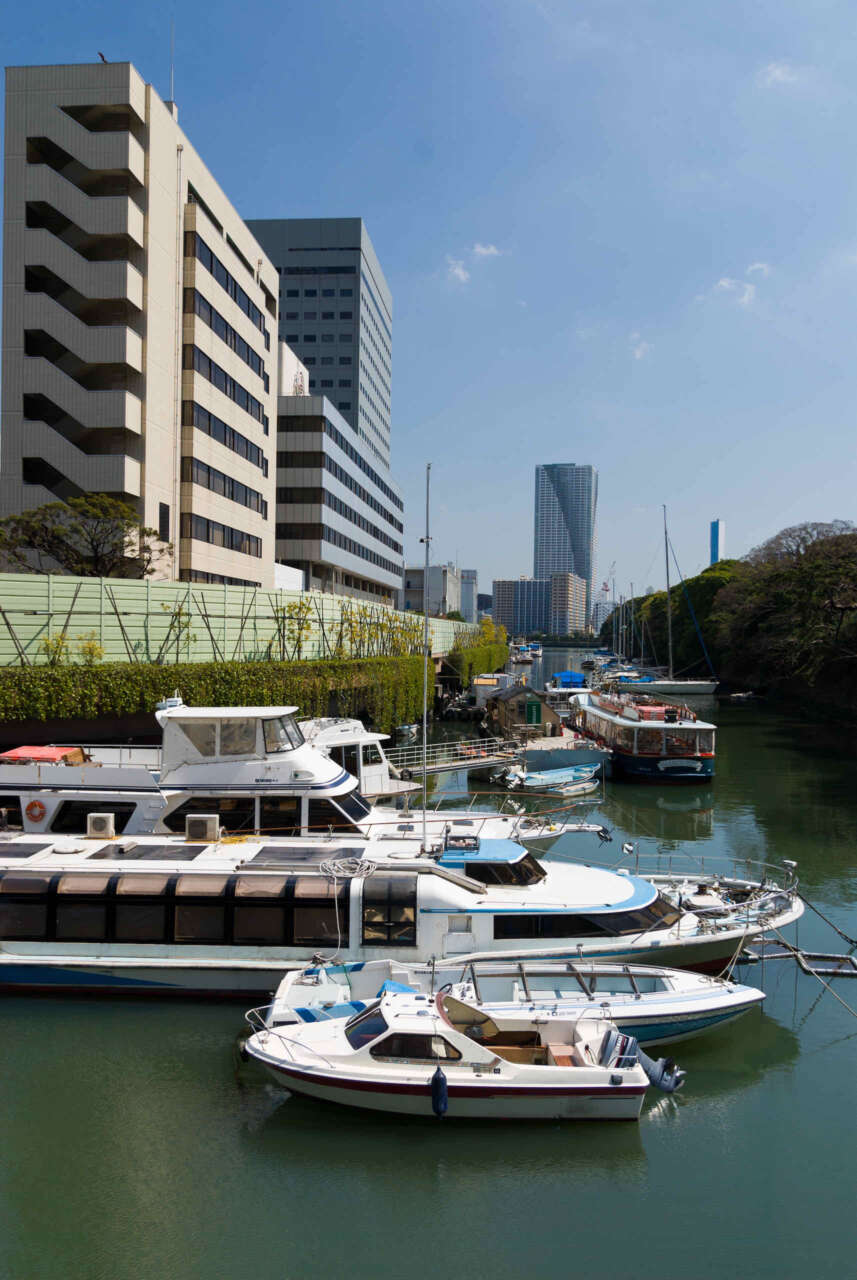












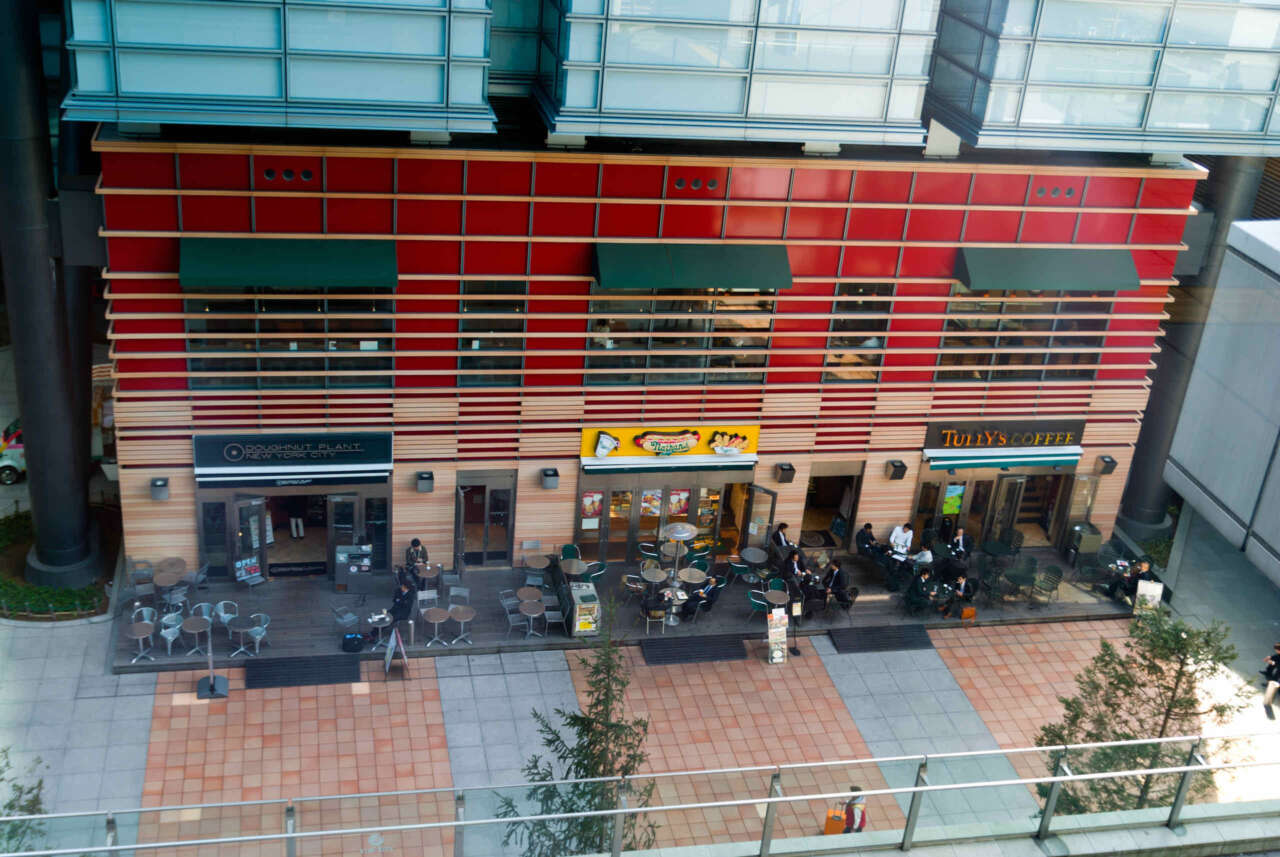
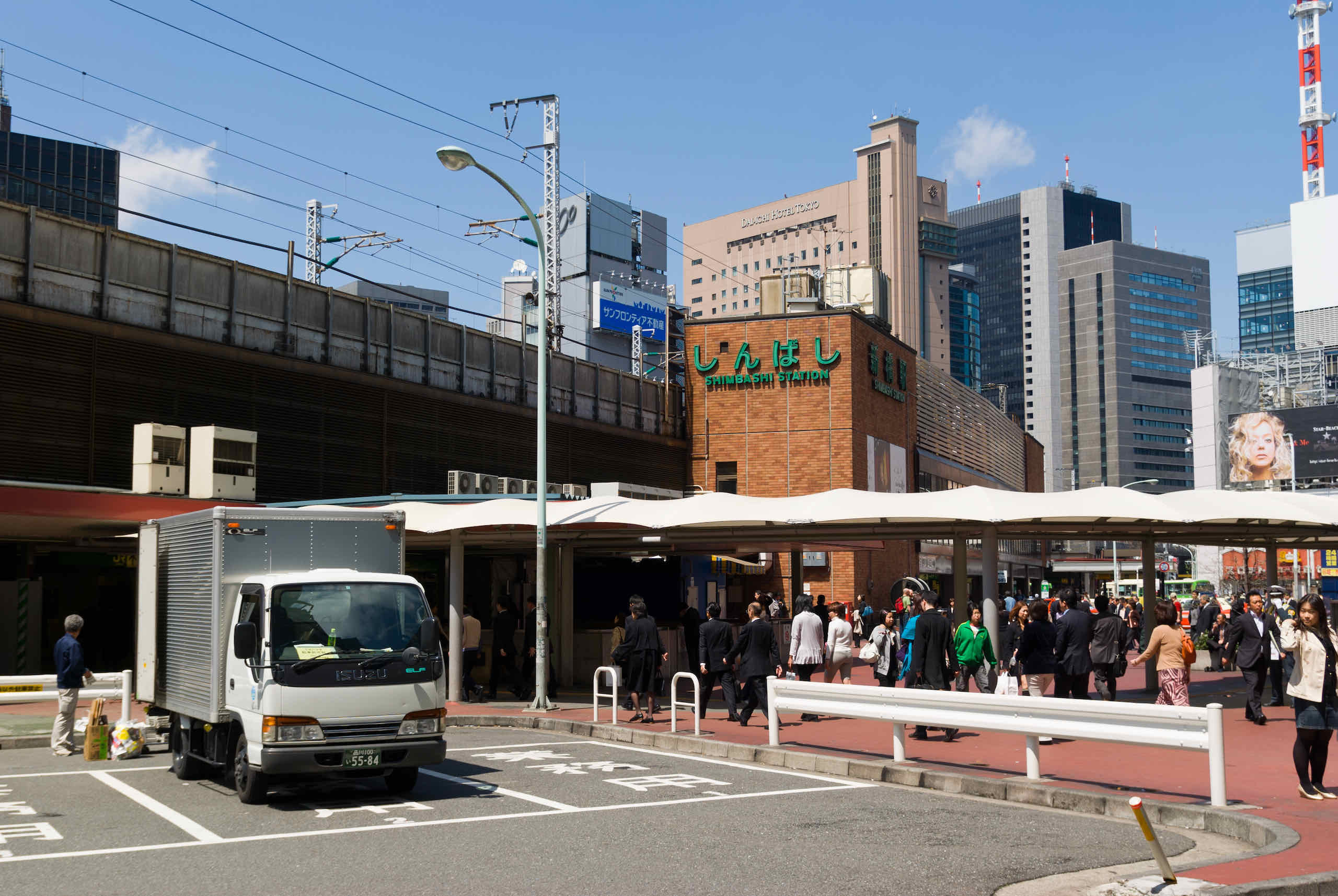
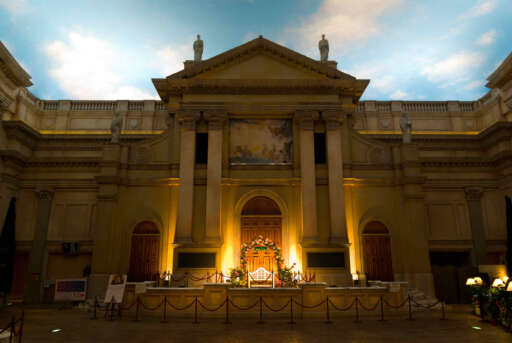
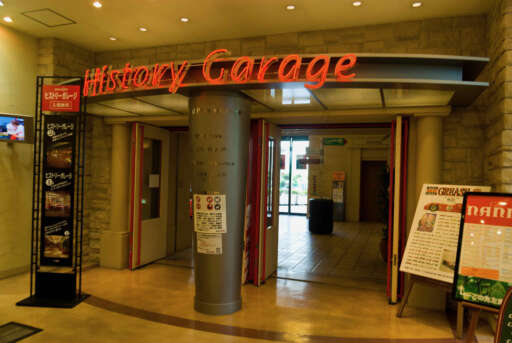
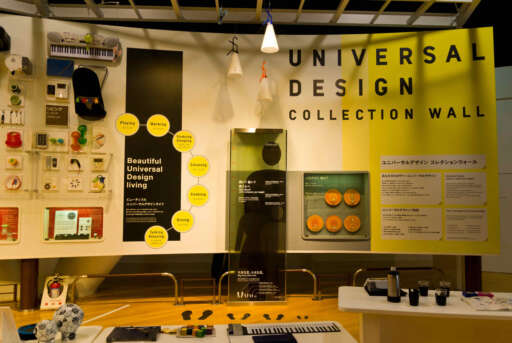
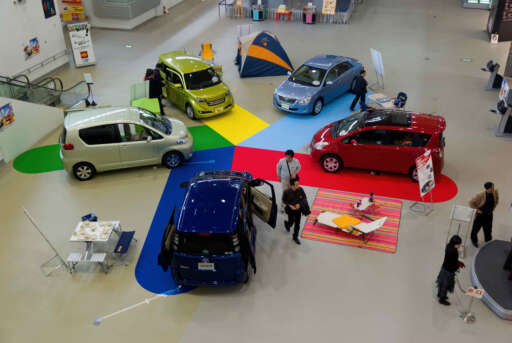
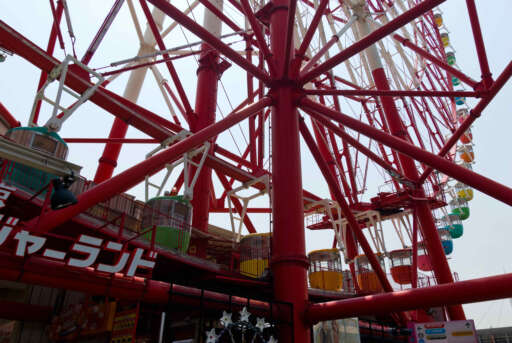
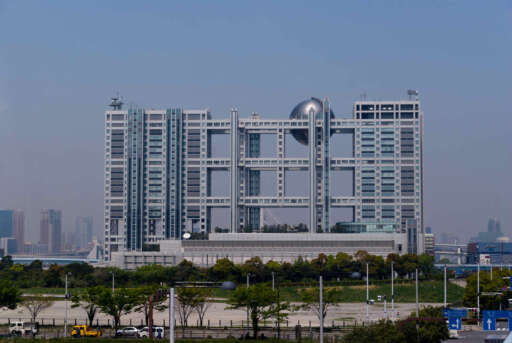
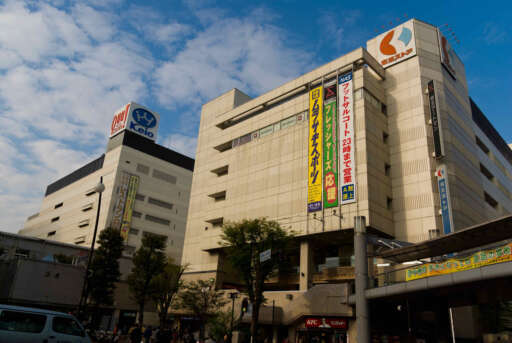
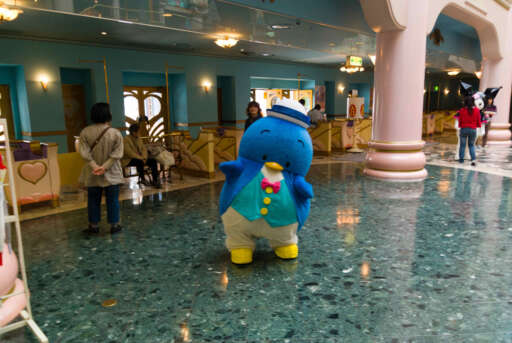
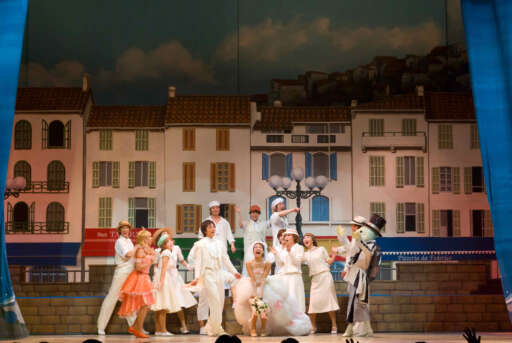
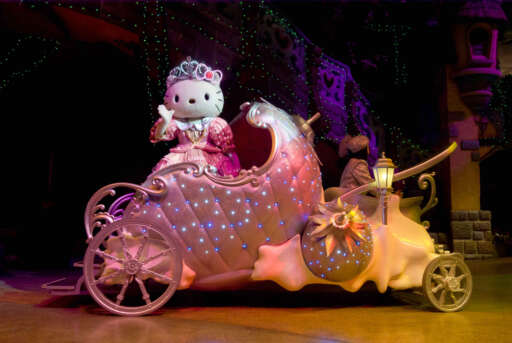
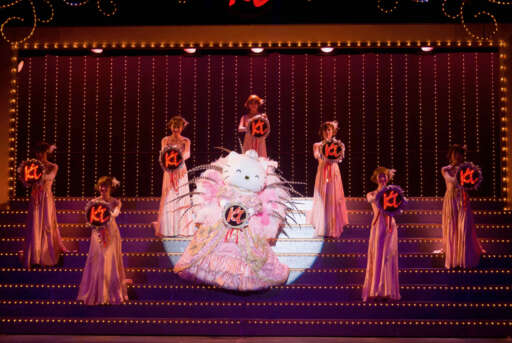
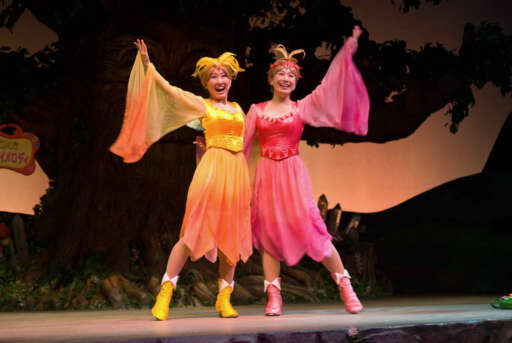
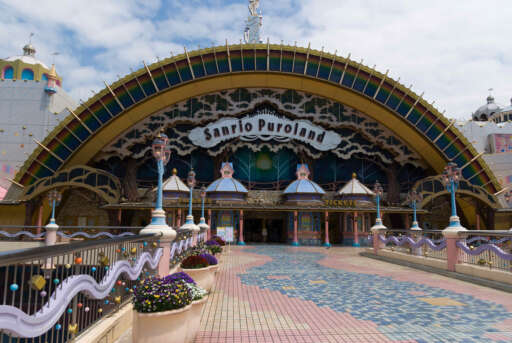
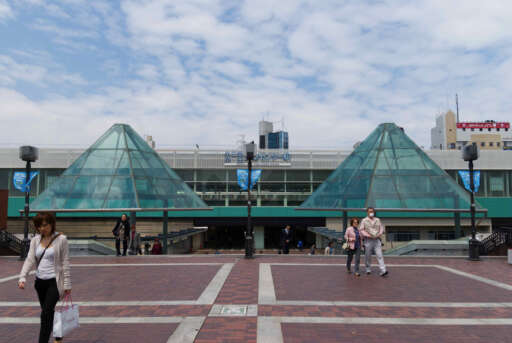
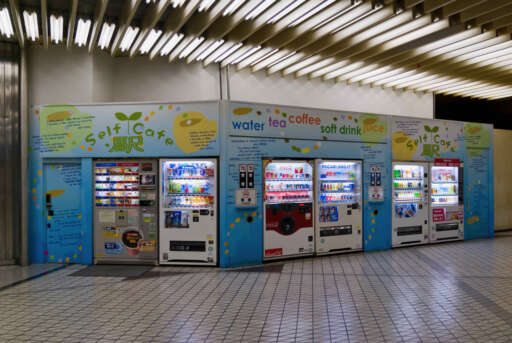
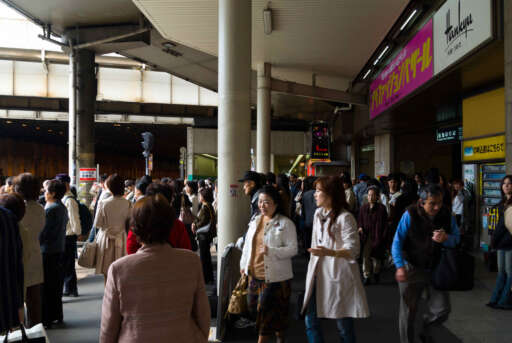
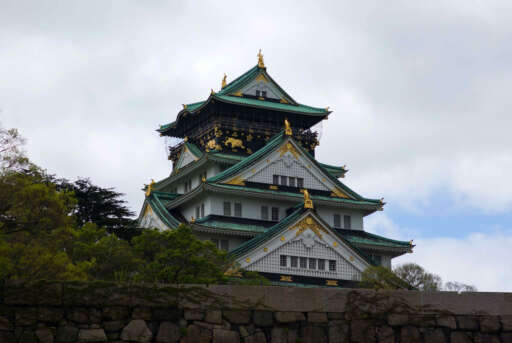
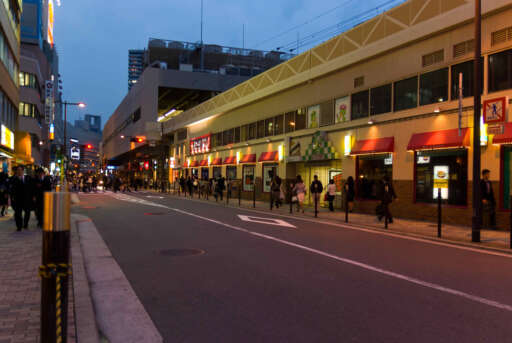
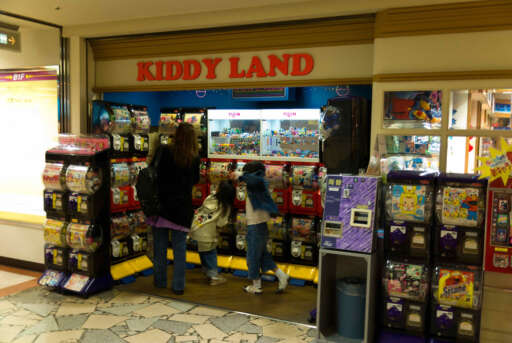
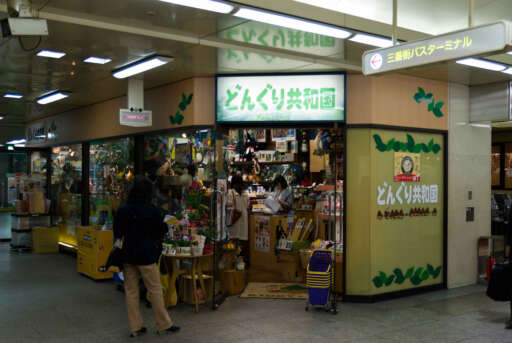
Just stumbled upon your blog.
So informative!
Thank you for sharing 😉
I love that copper clock designed by Miyazaki Hayao. So dreamy!! <3
http://www.shabrinahazimi.blogspot.com